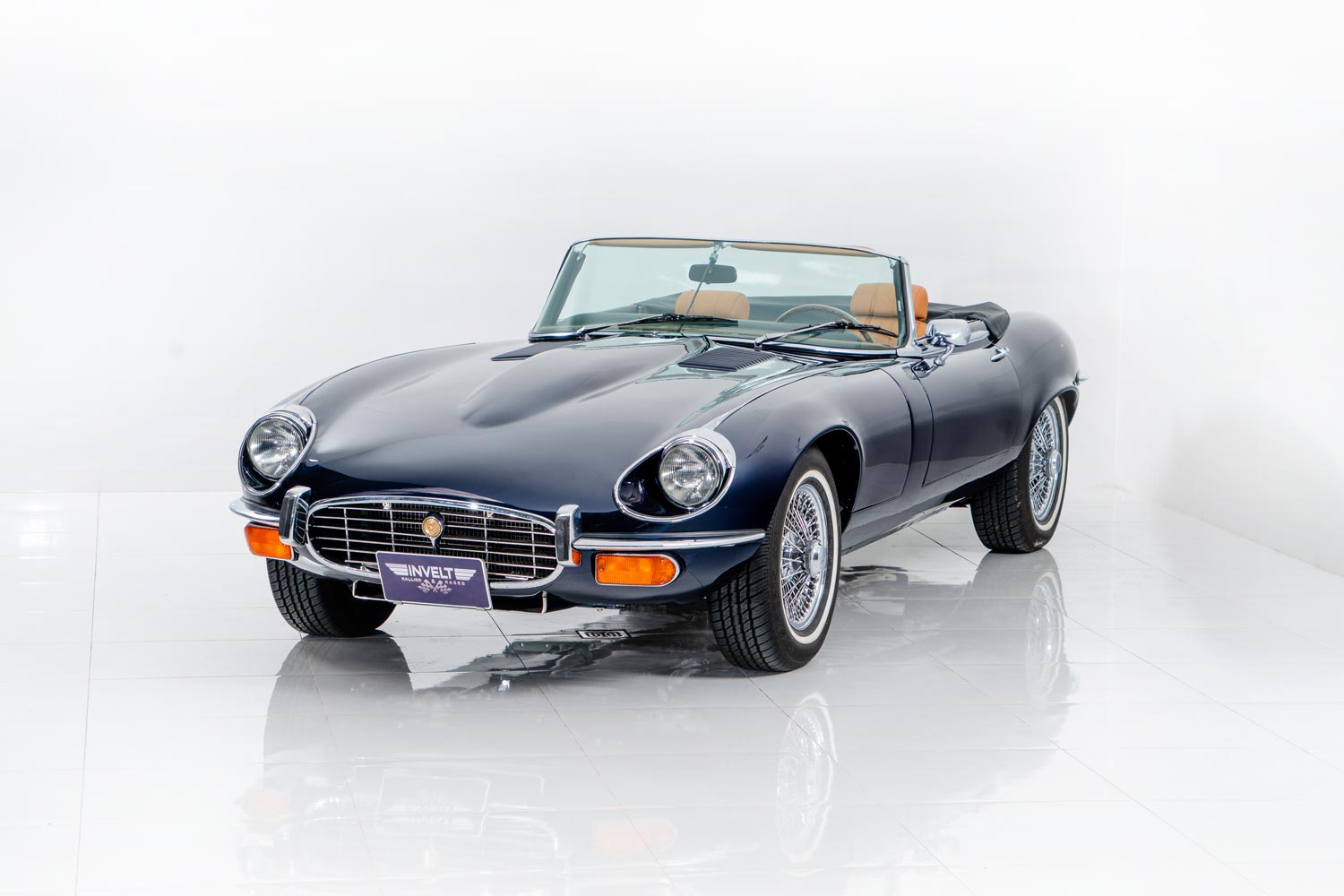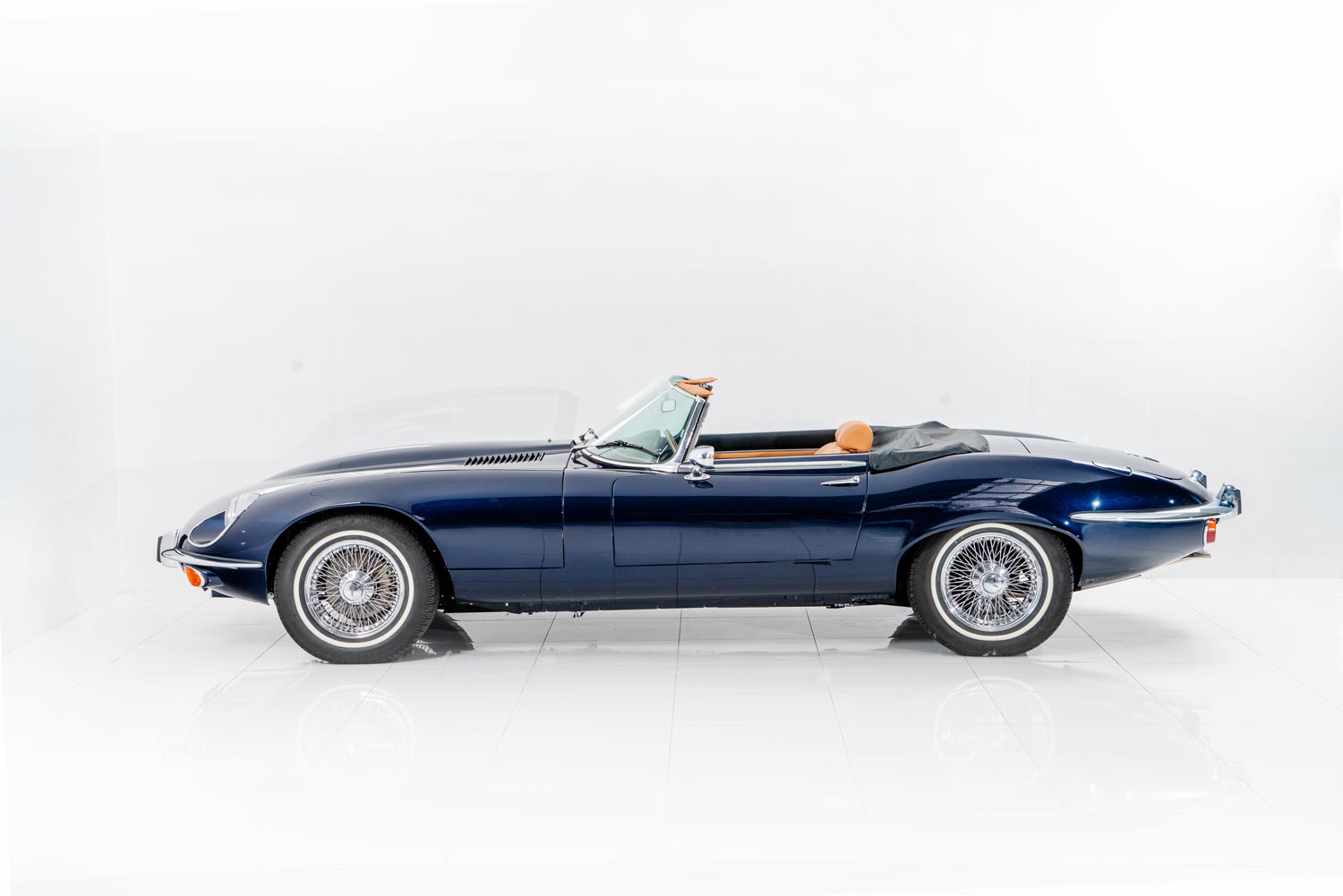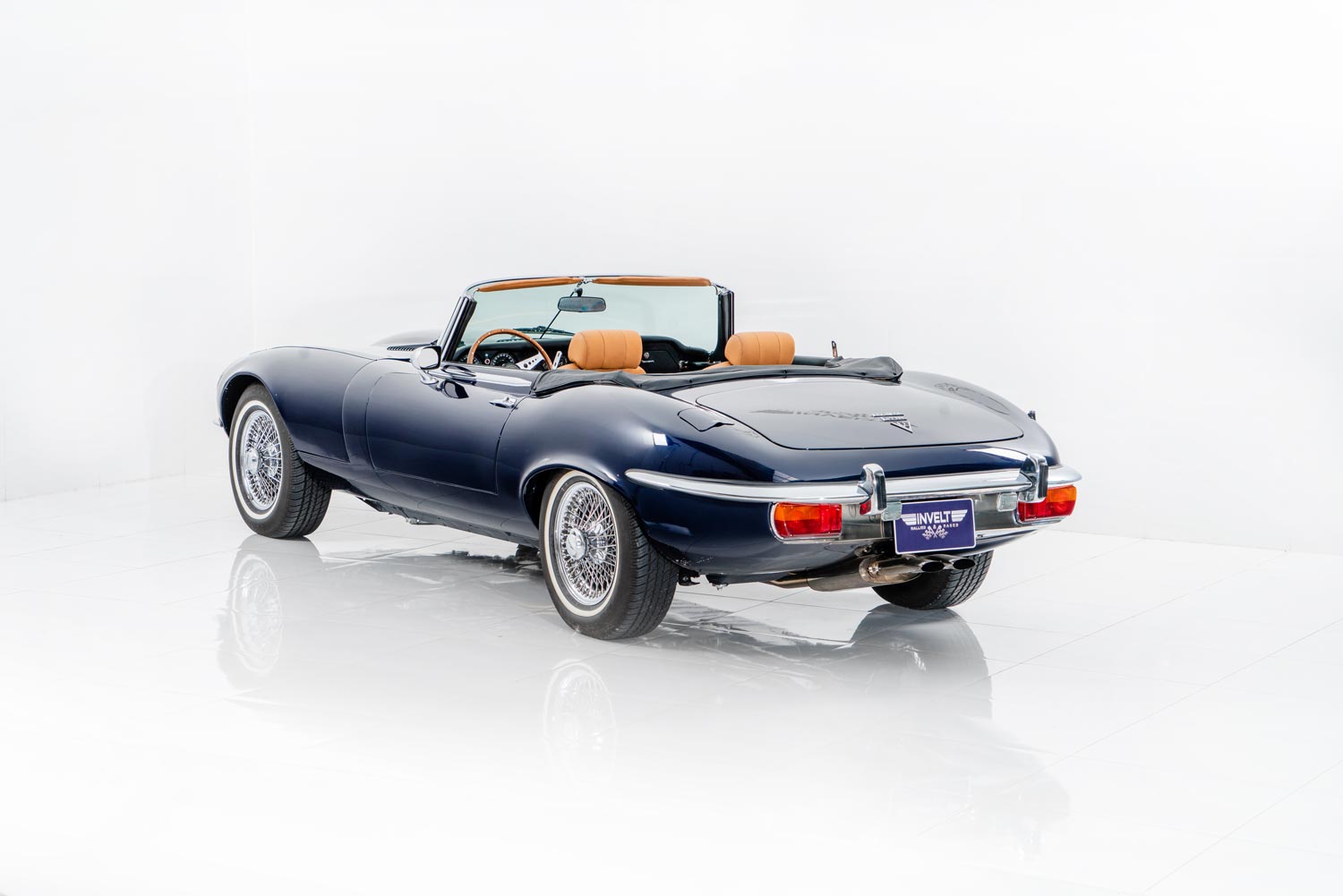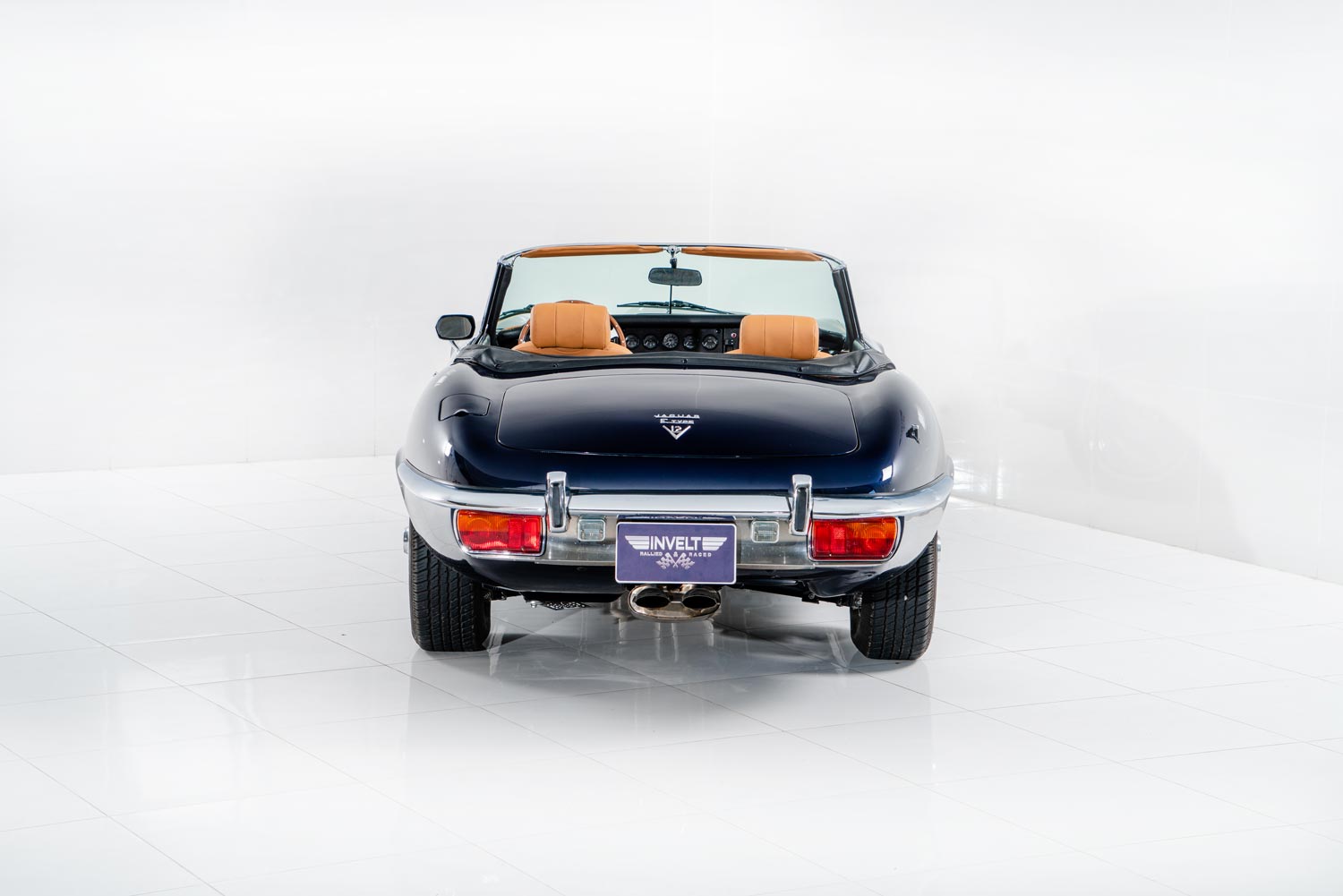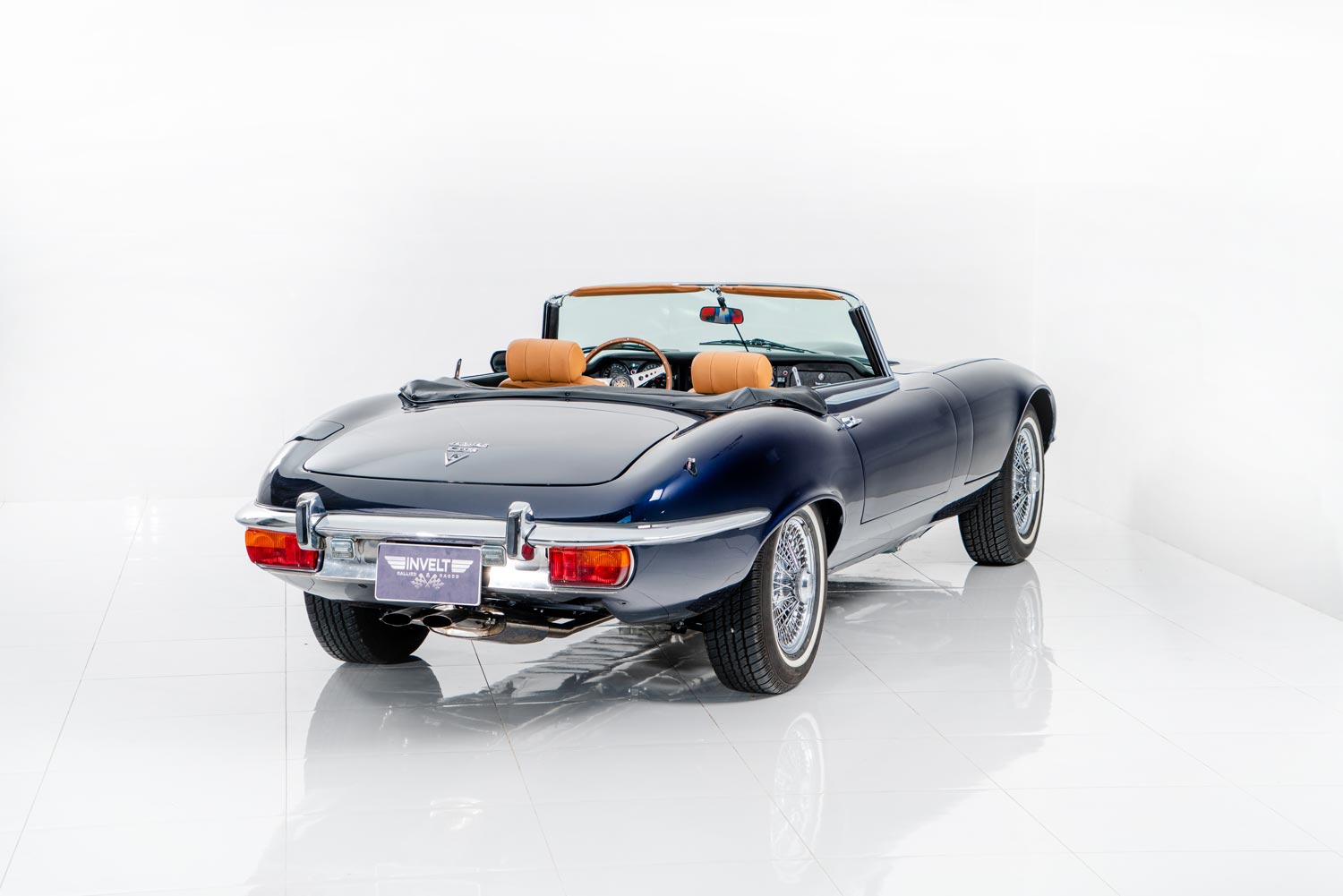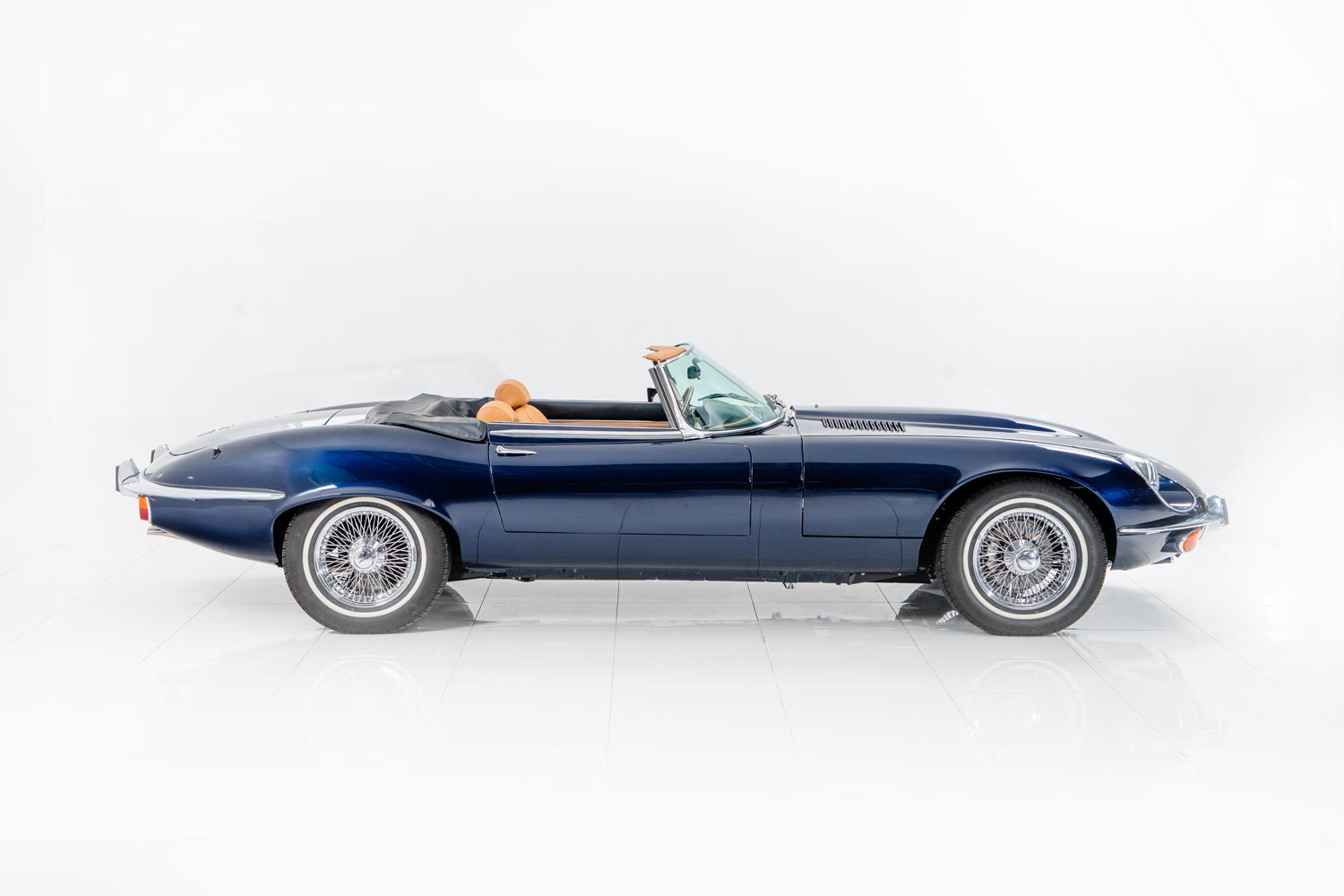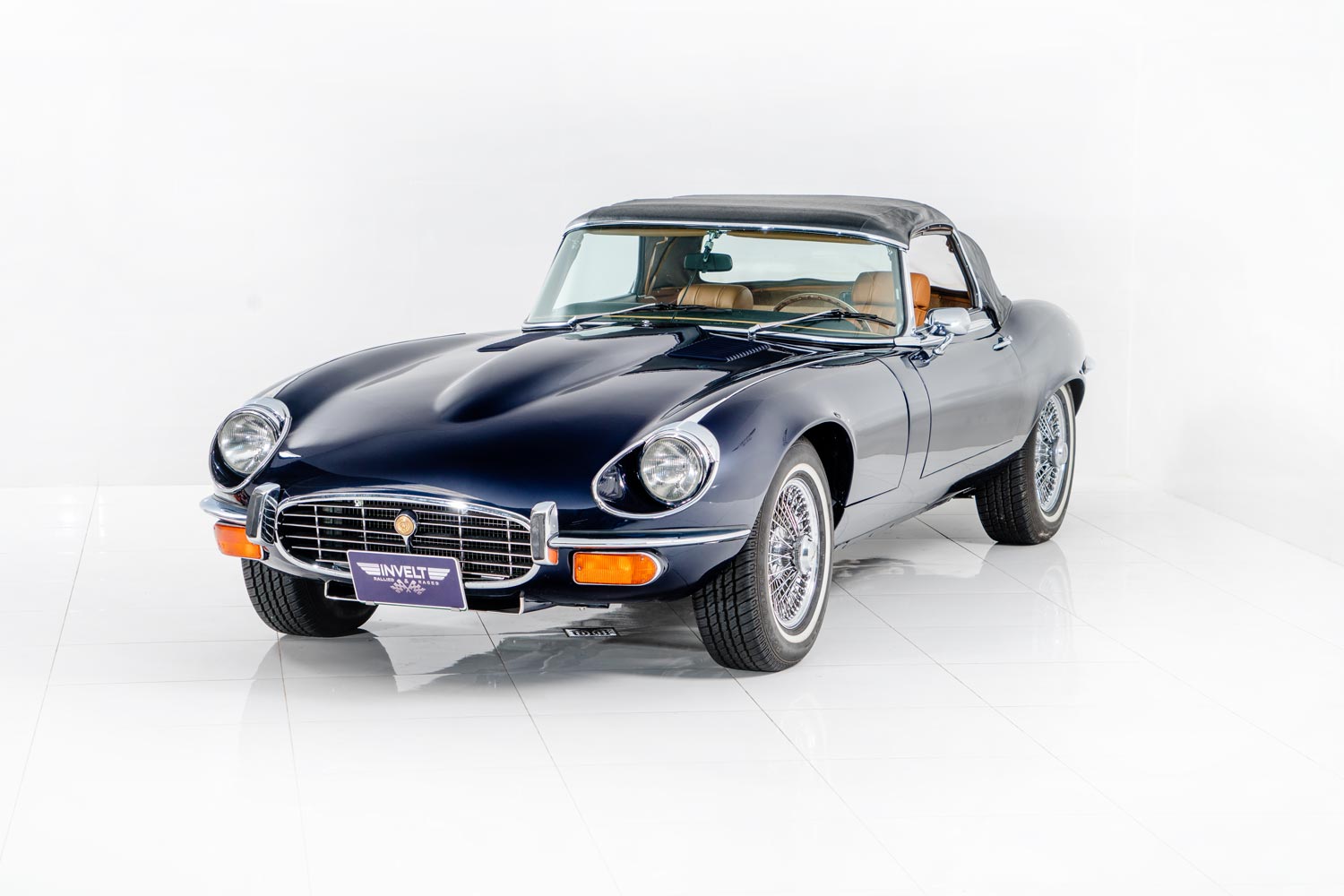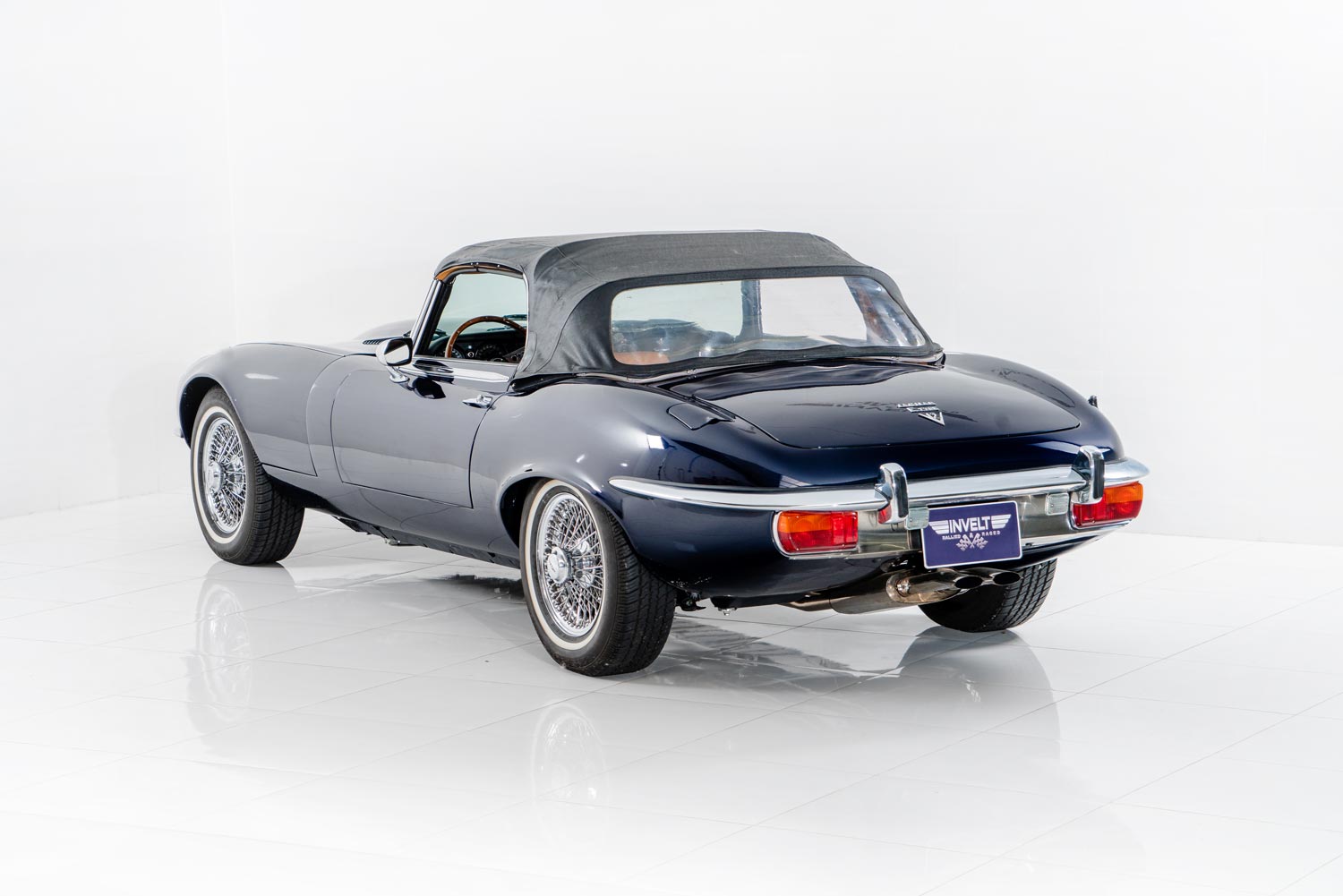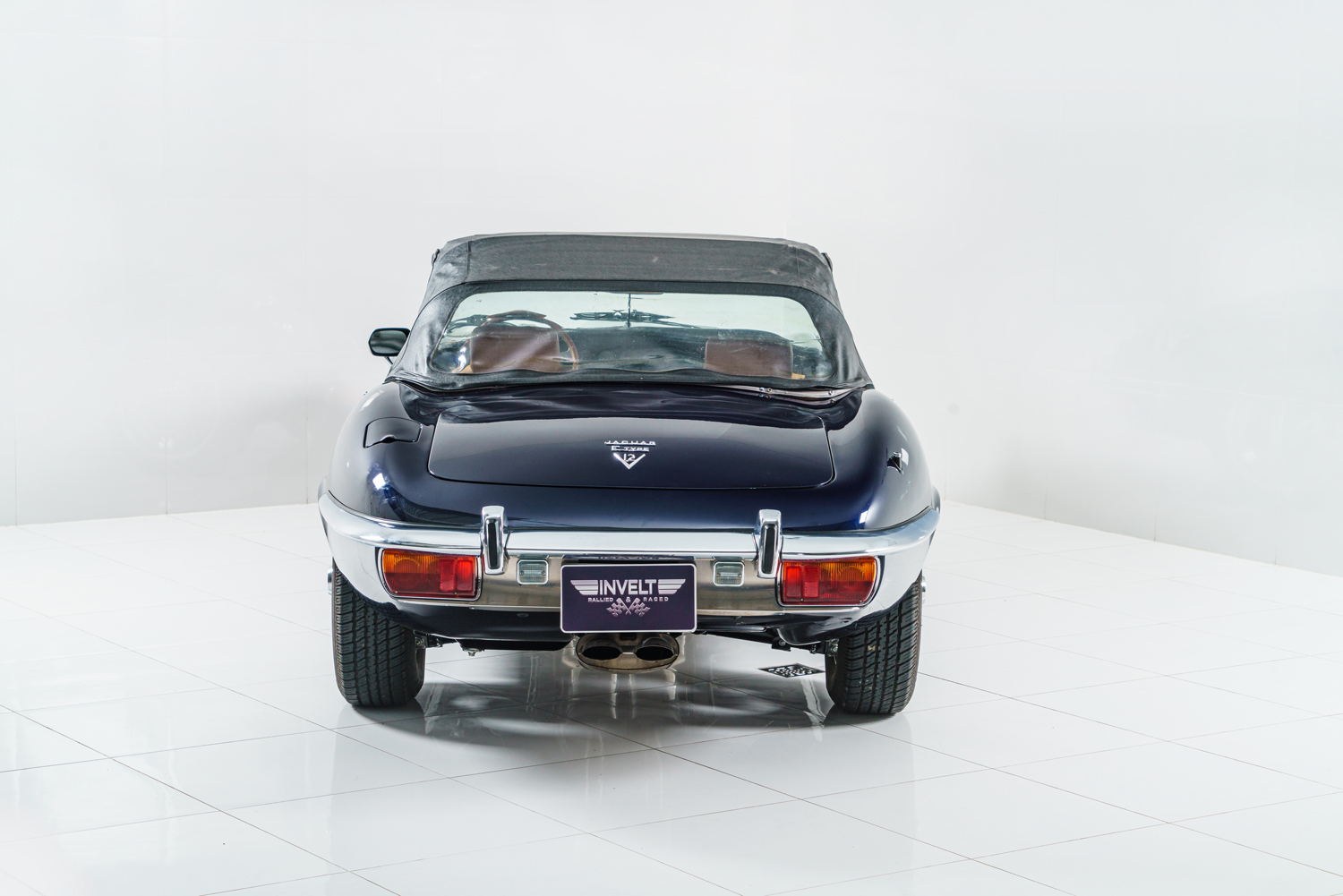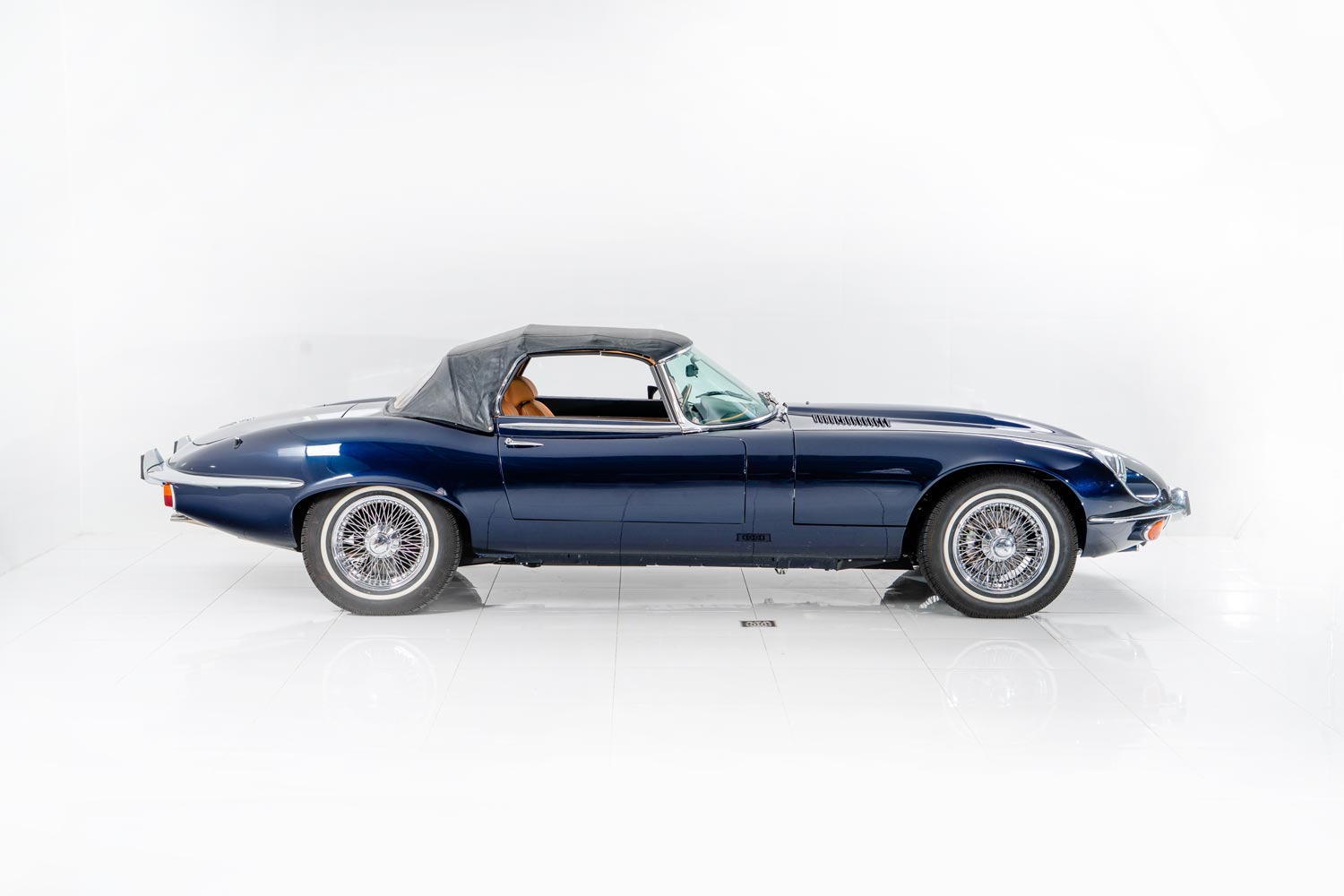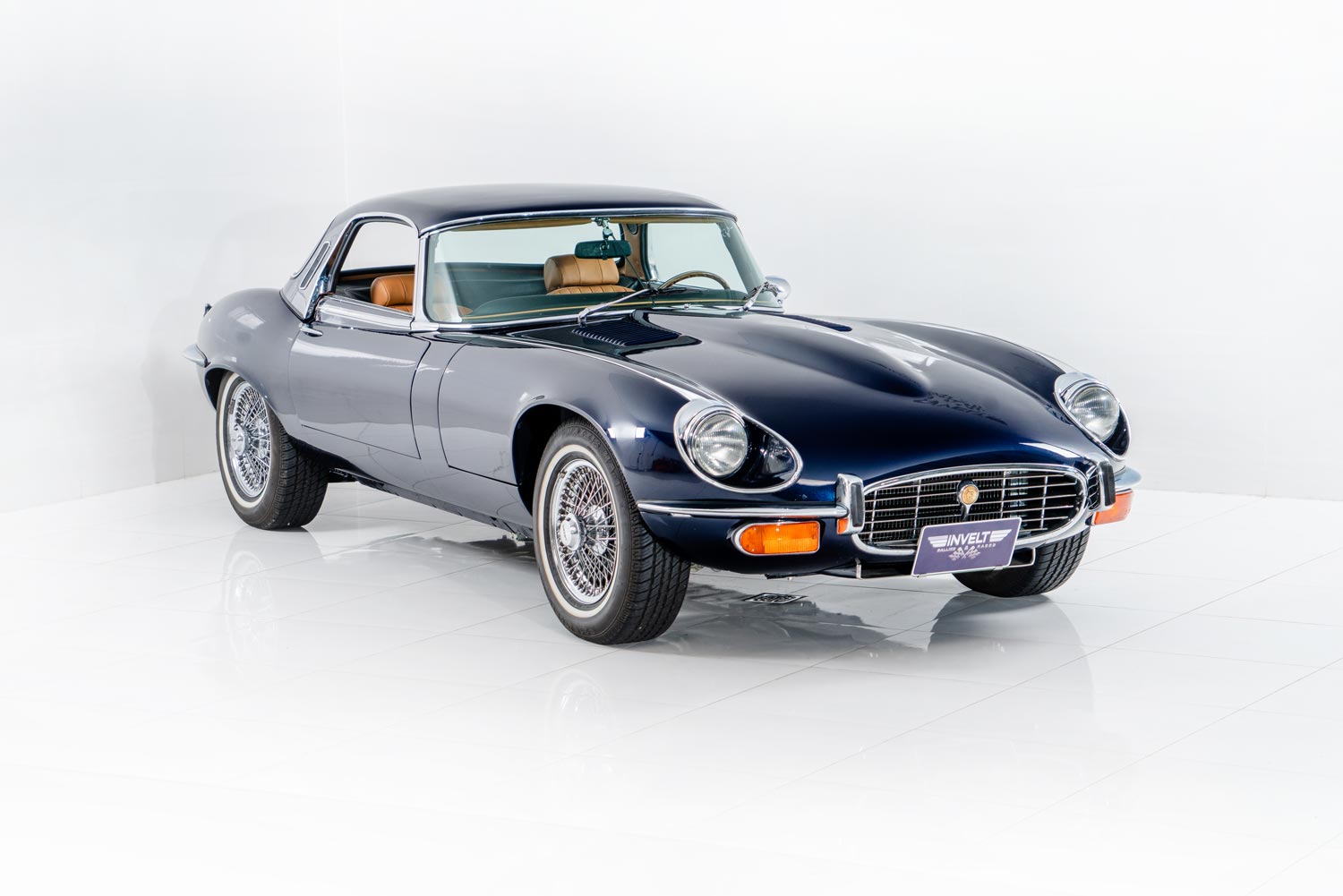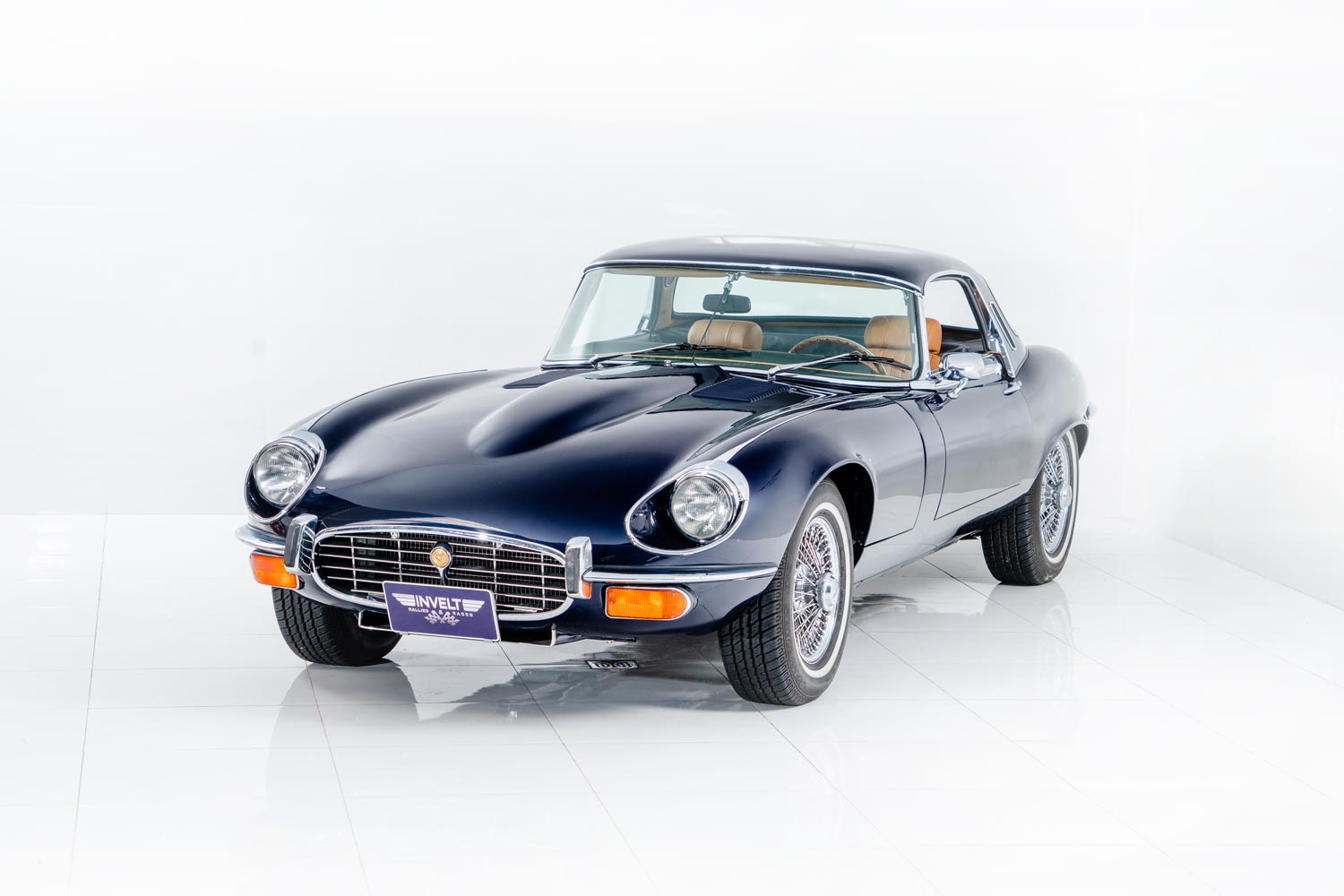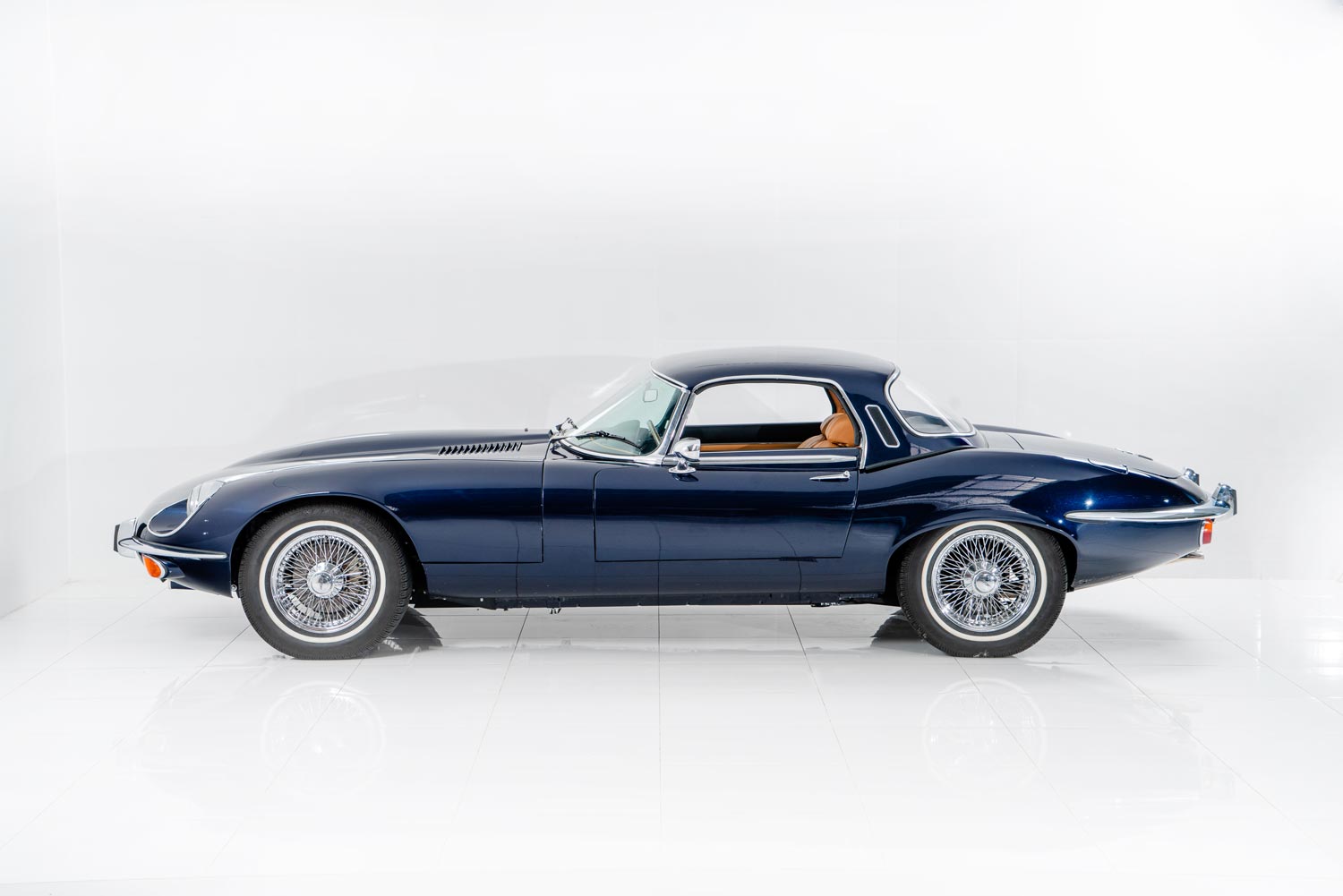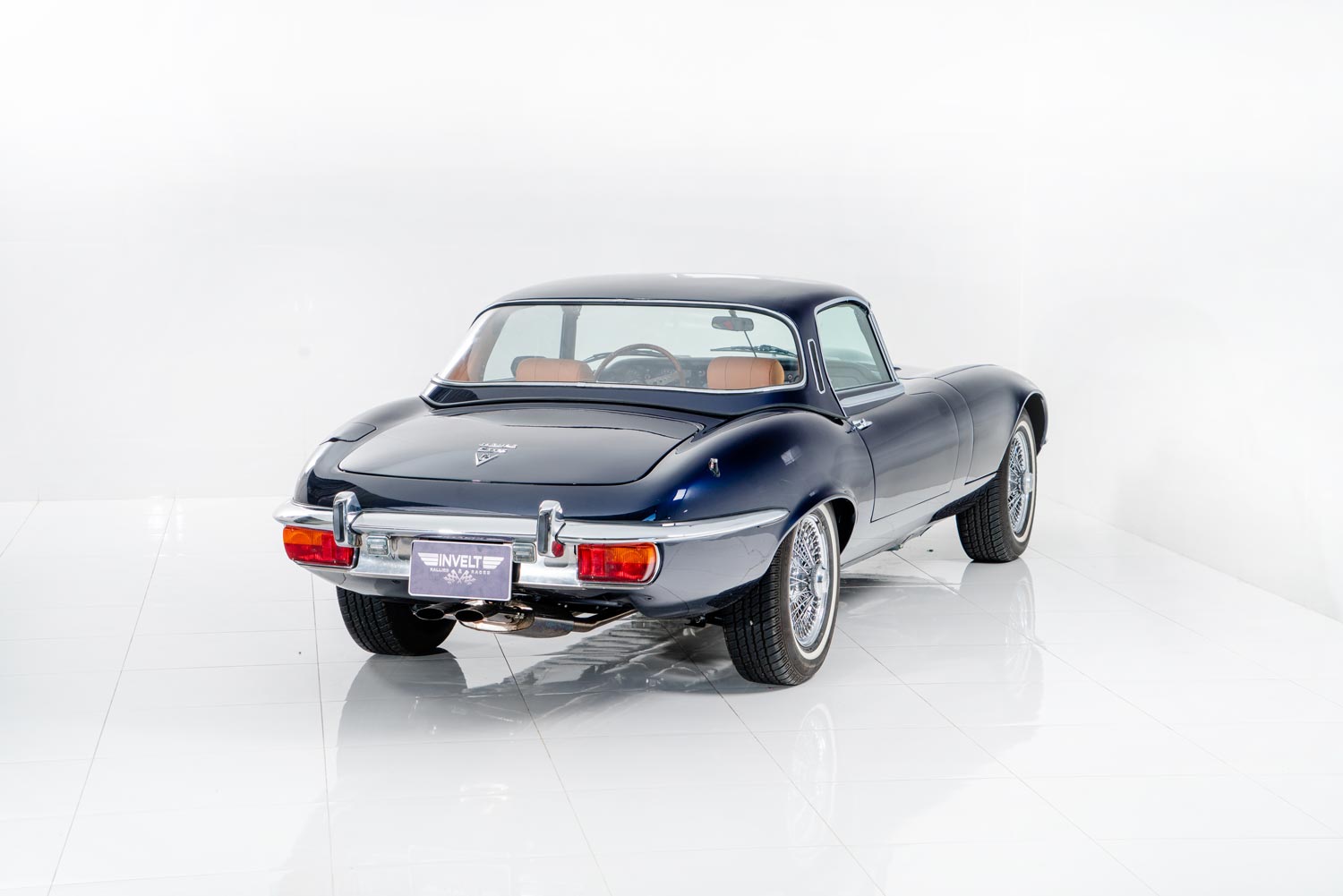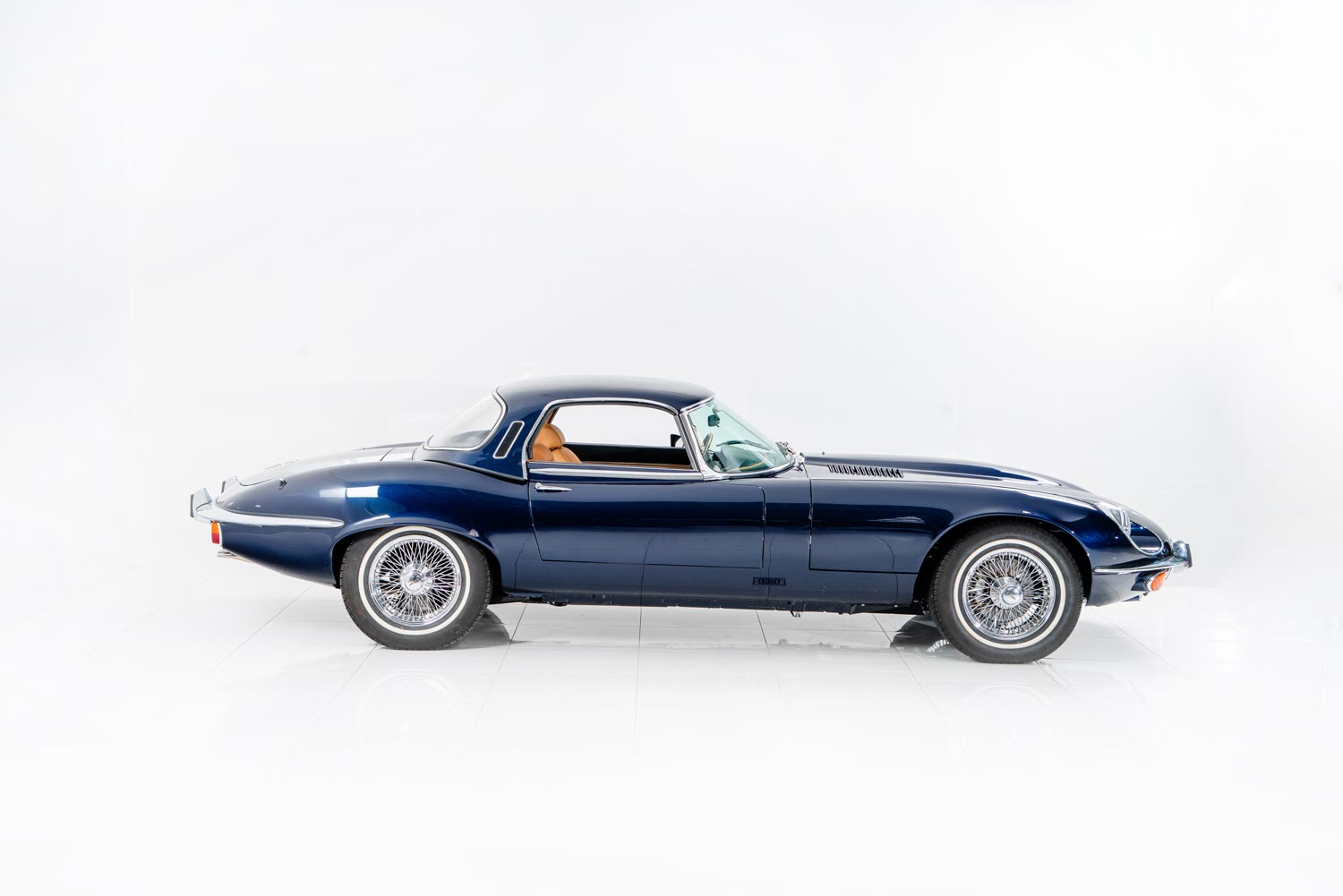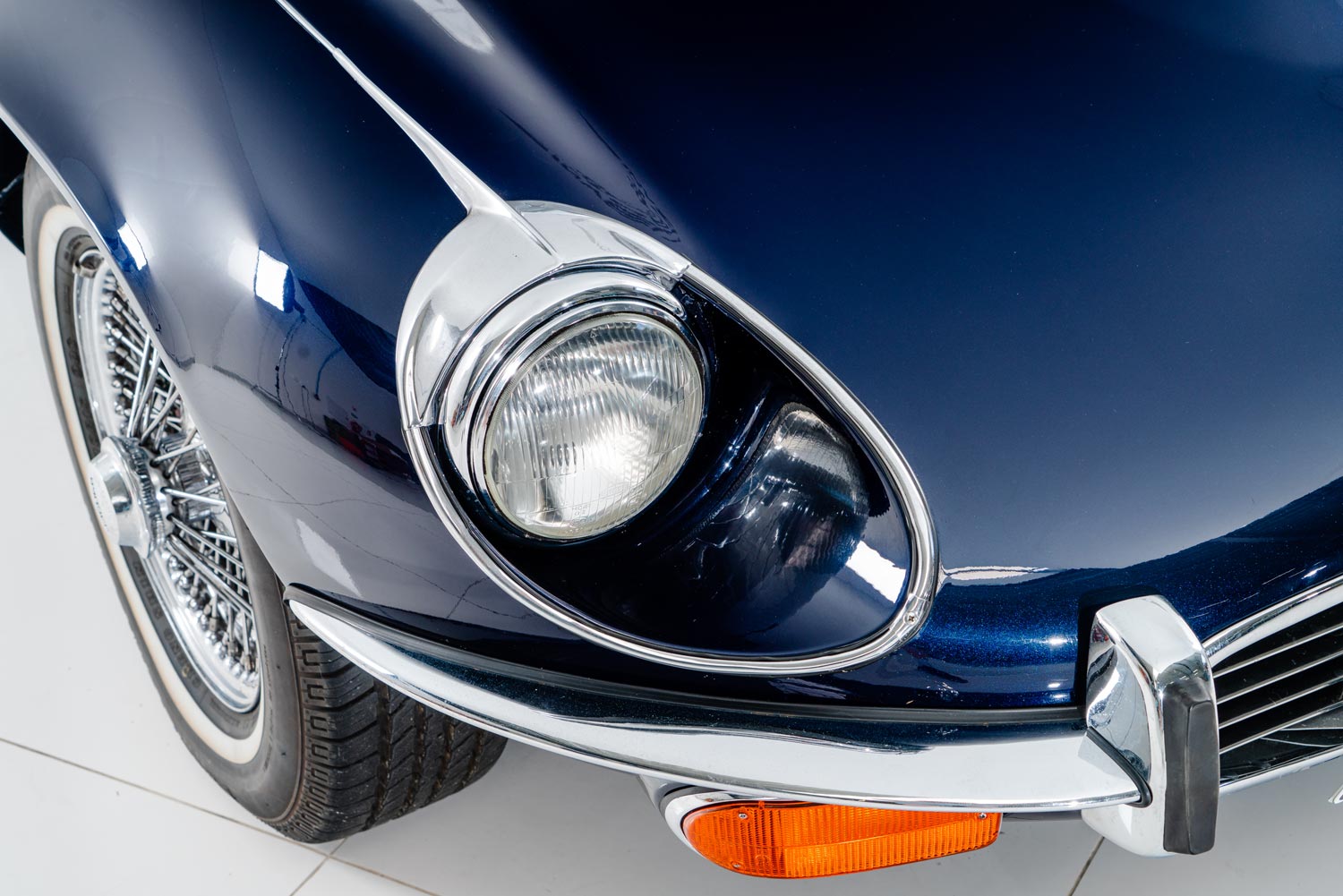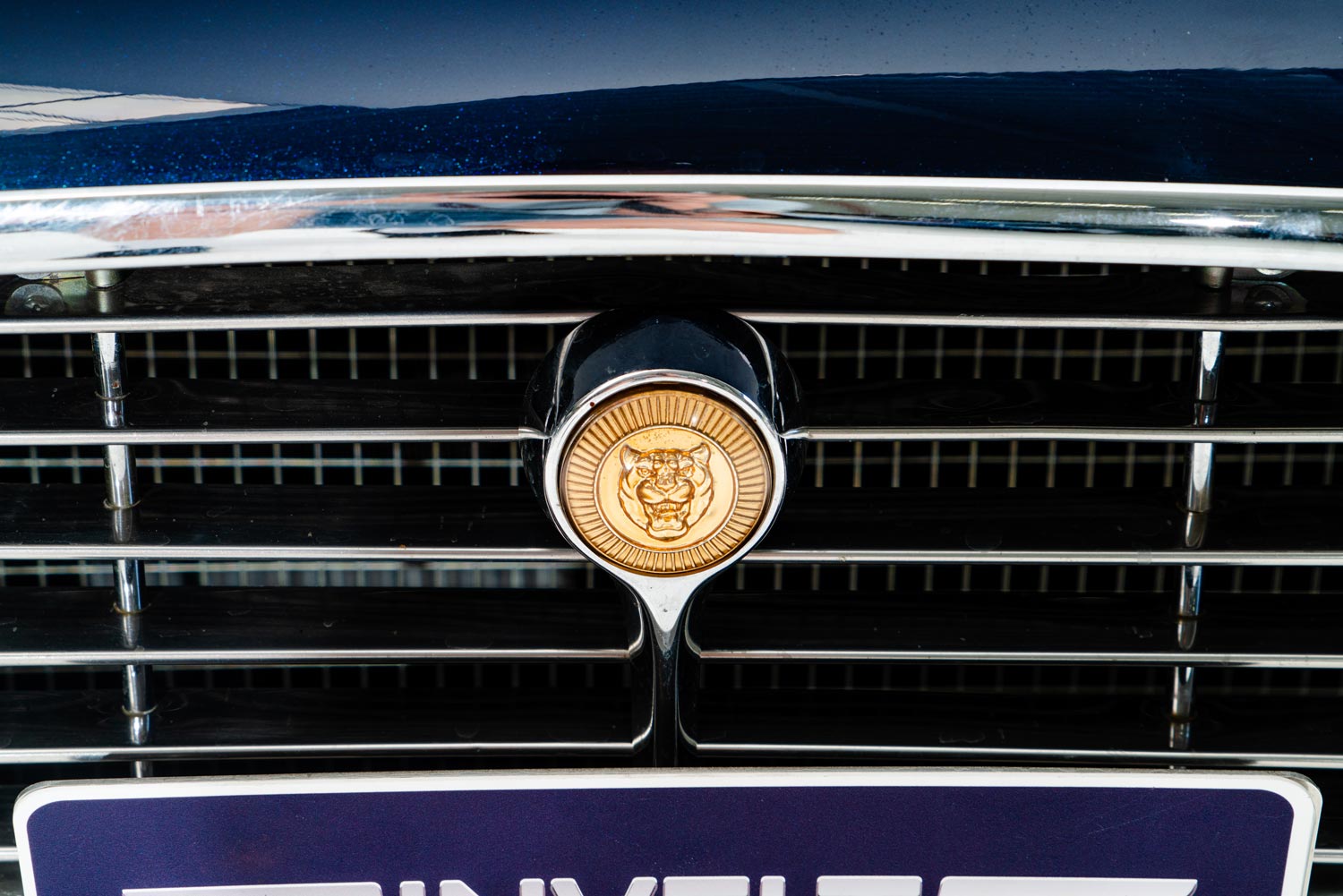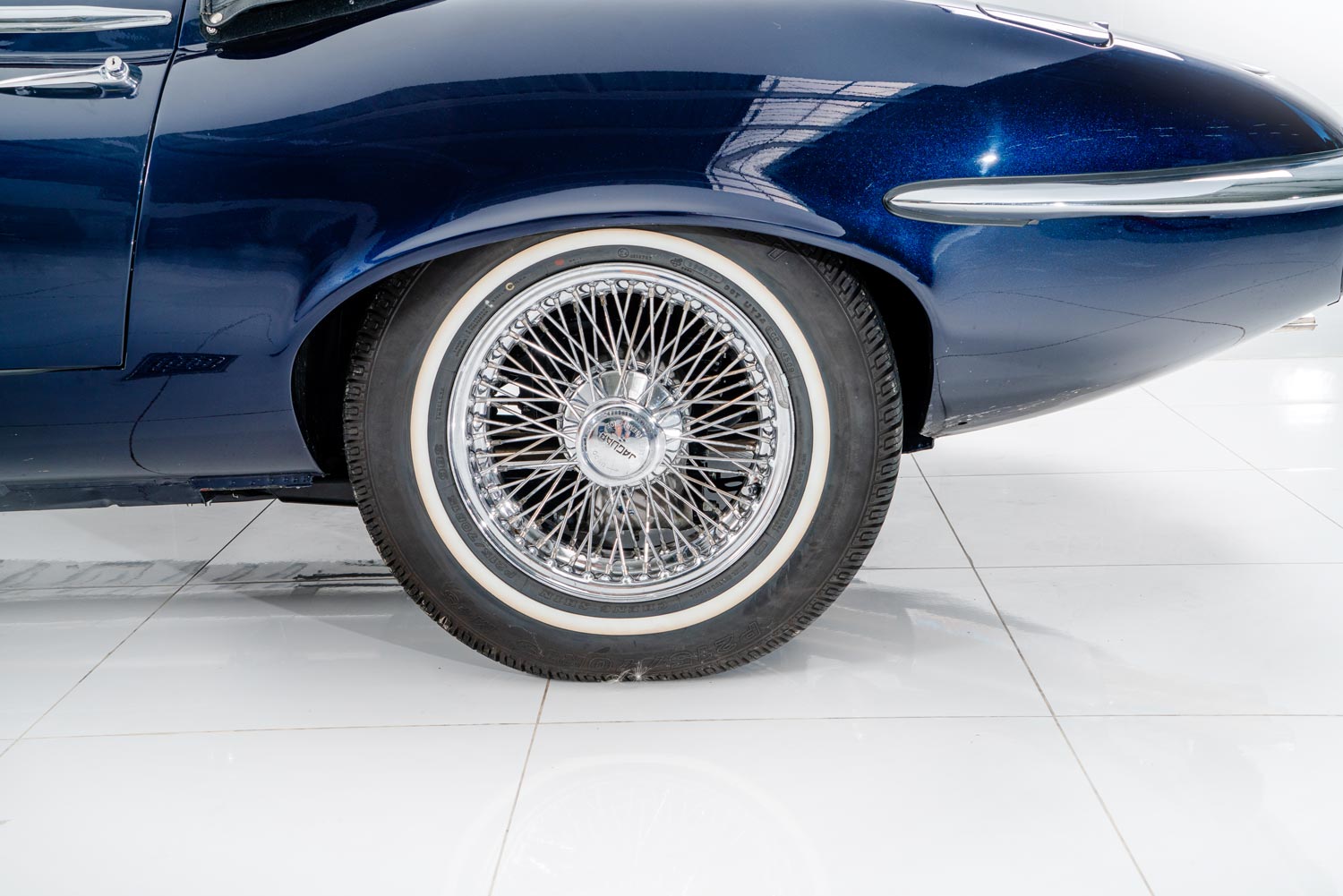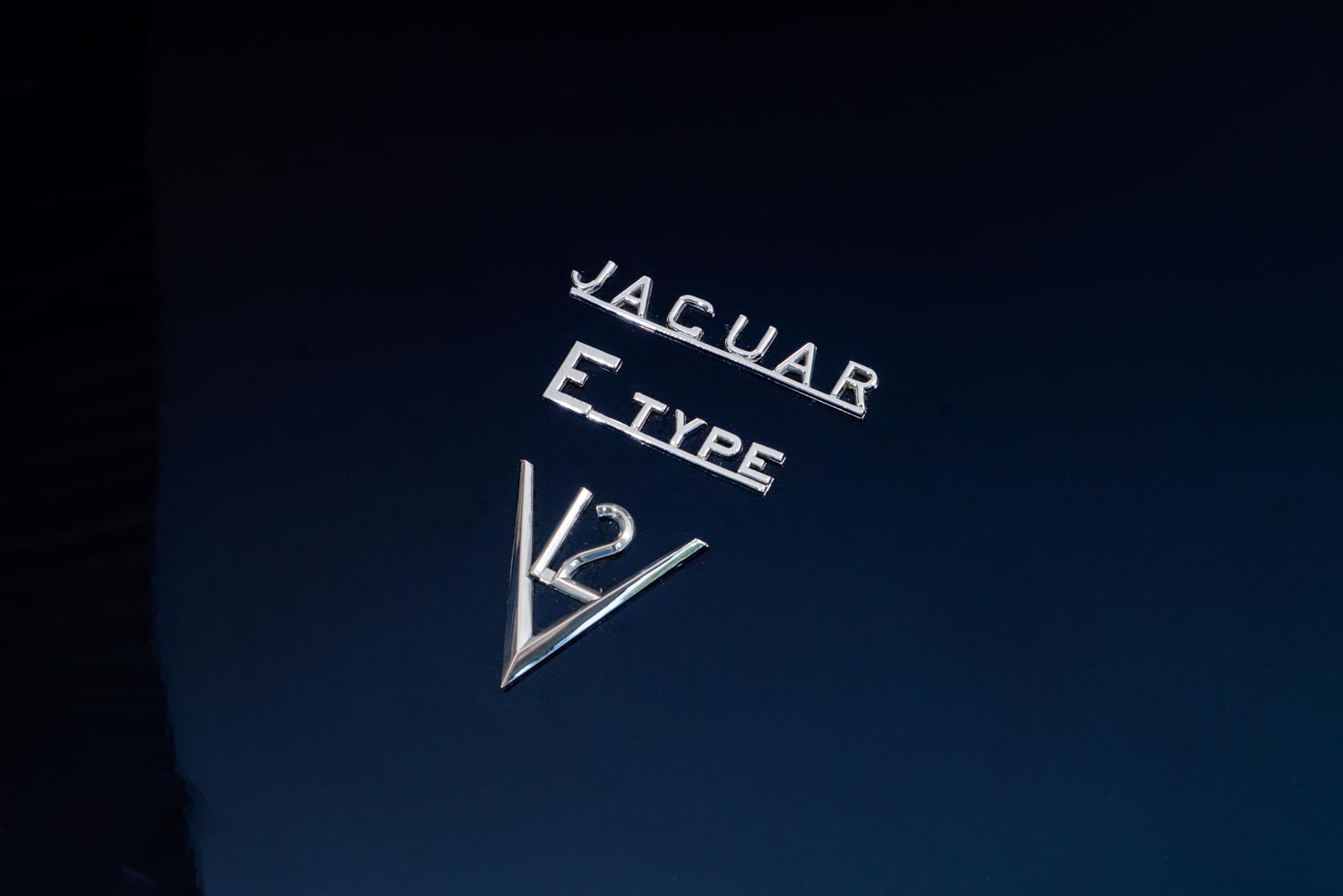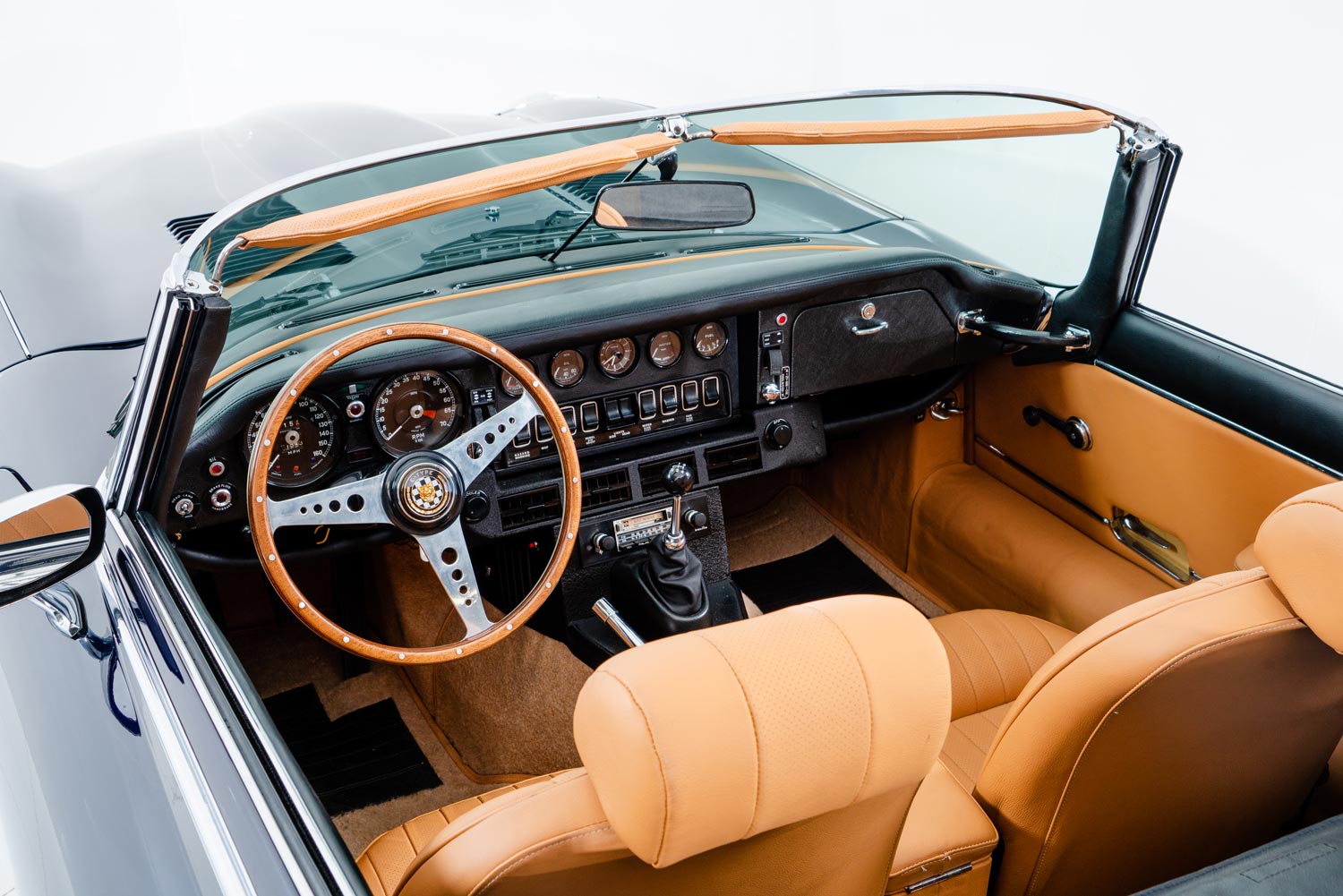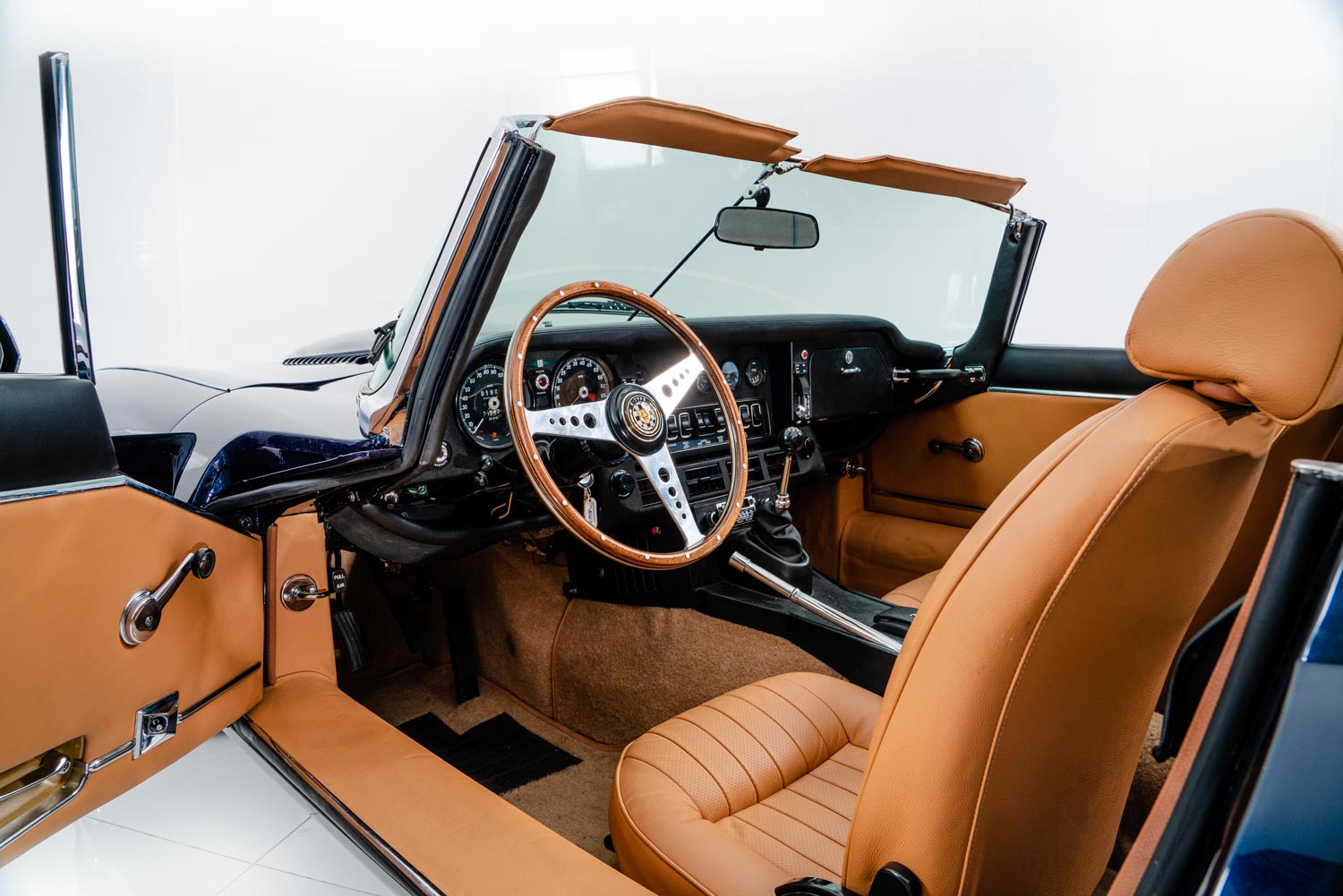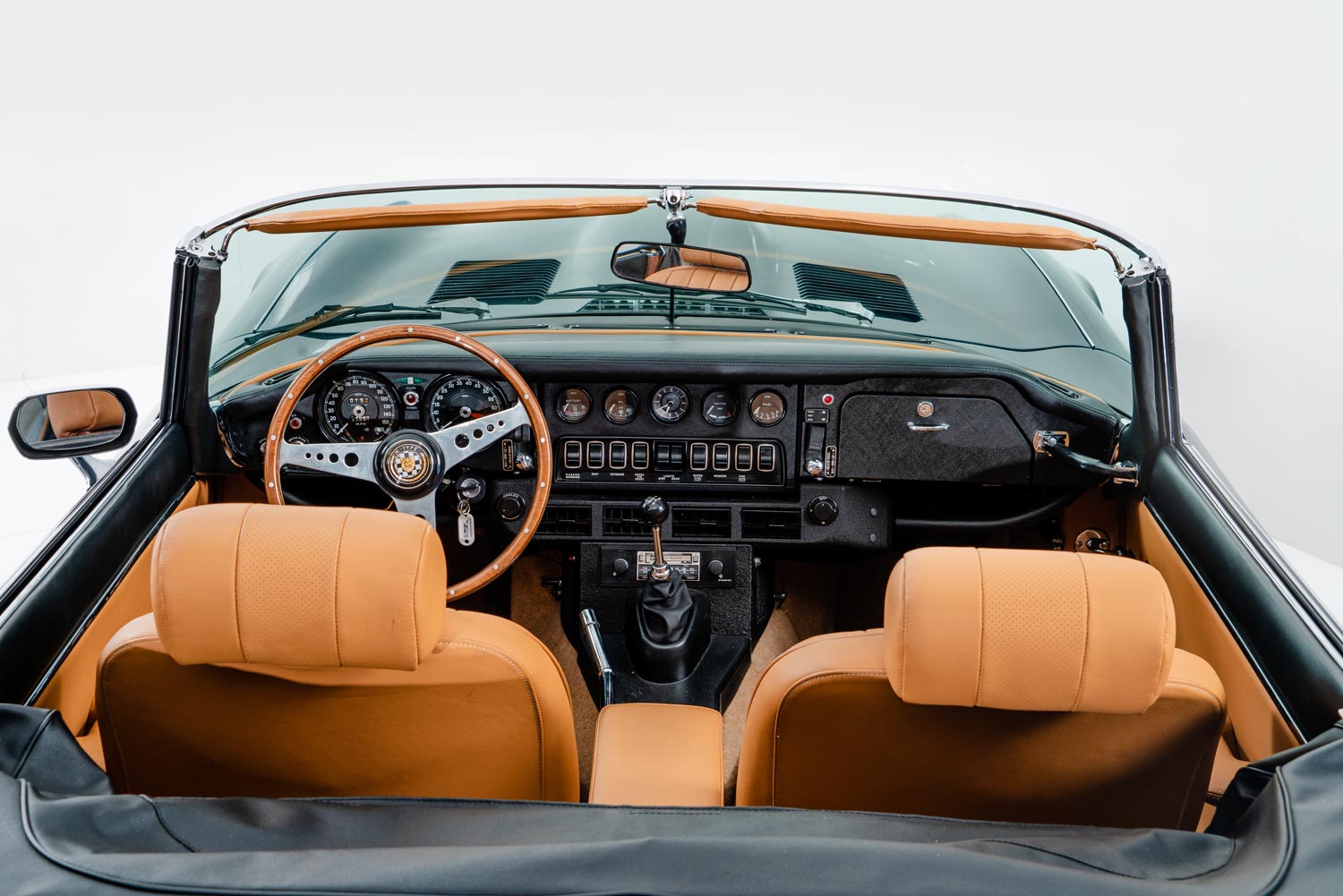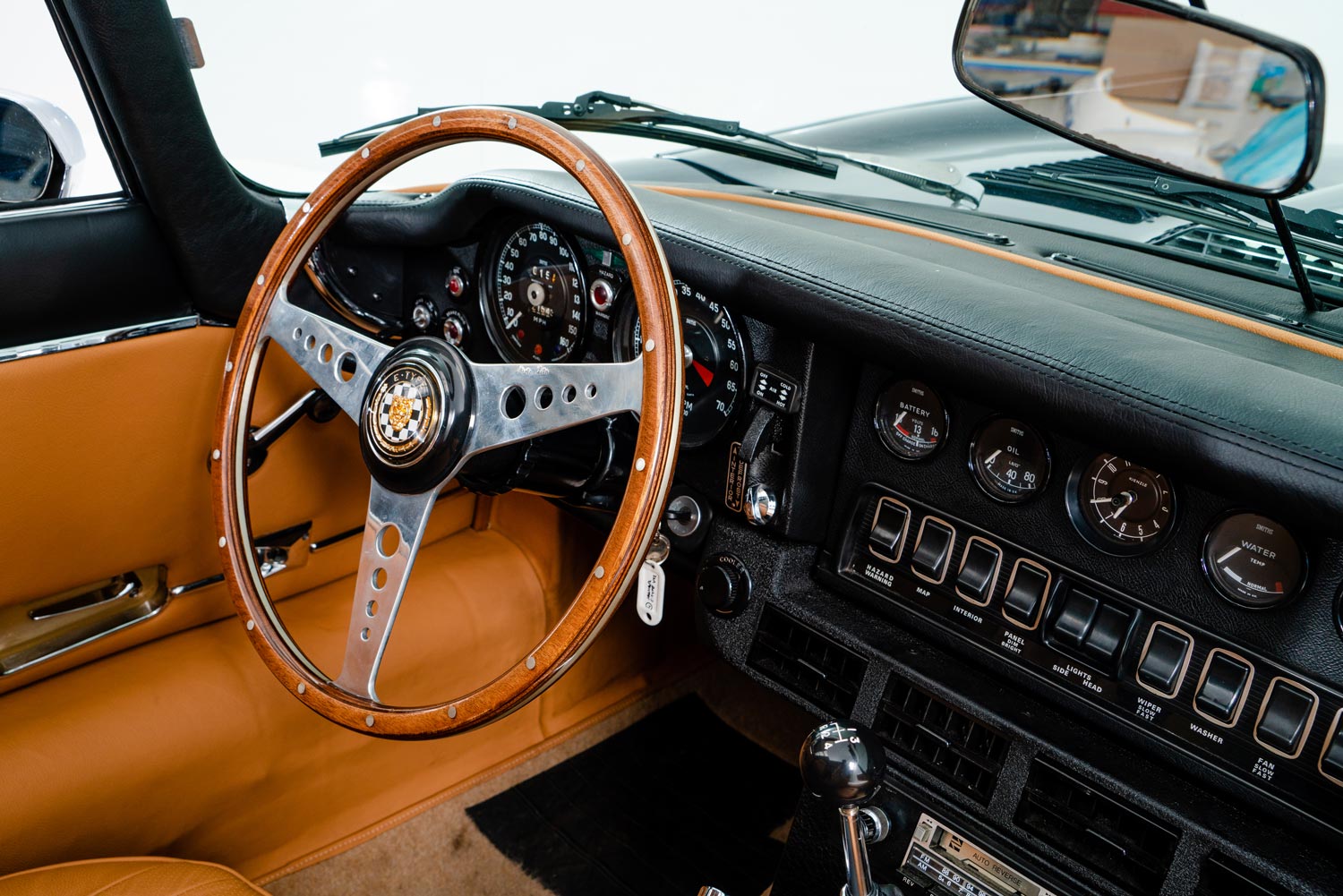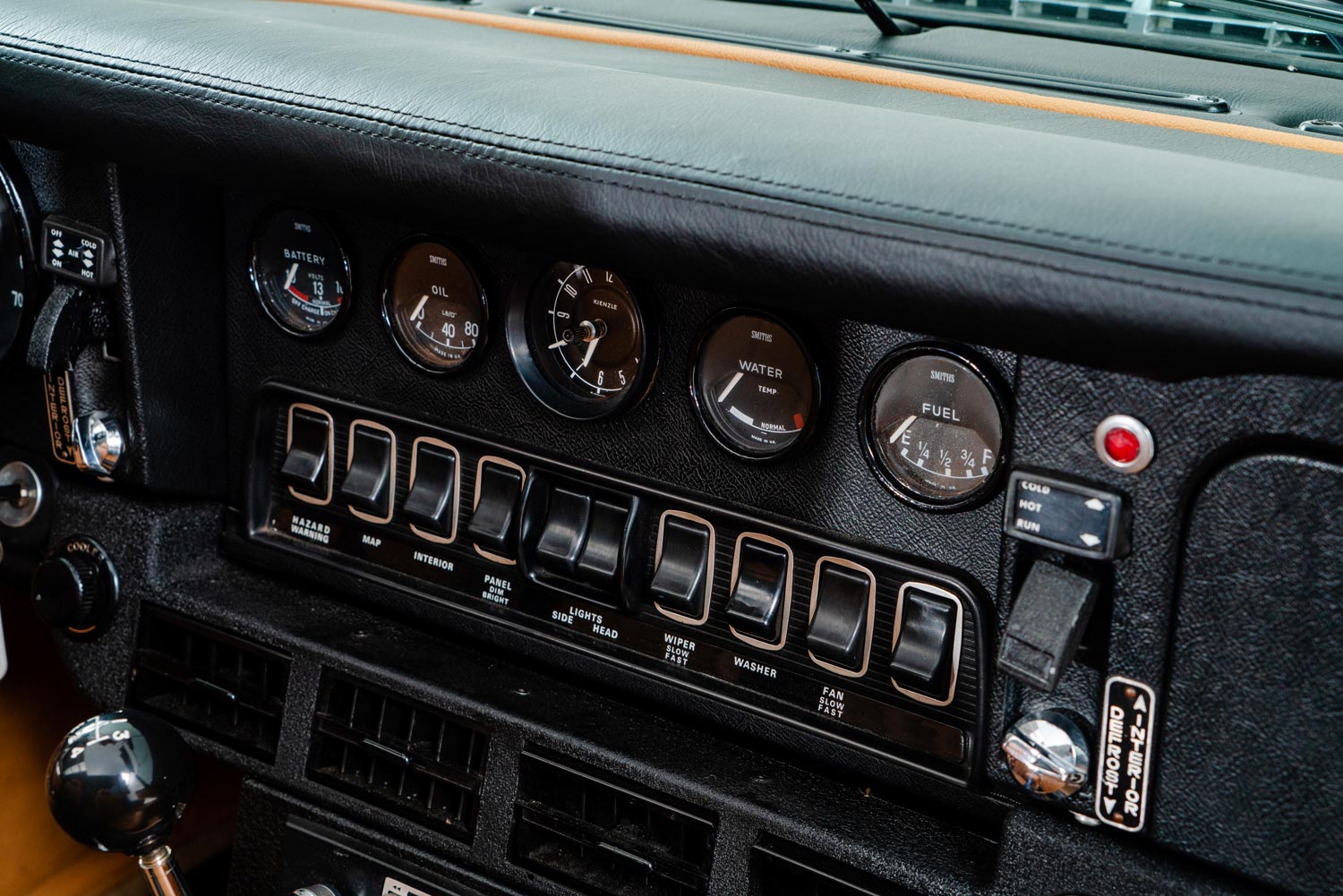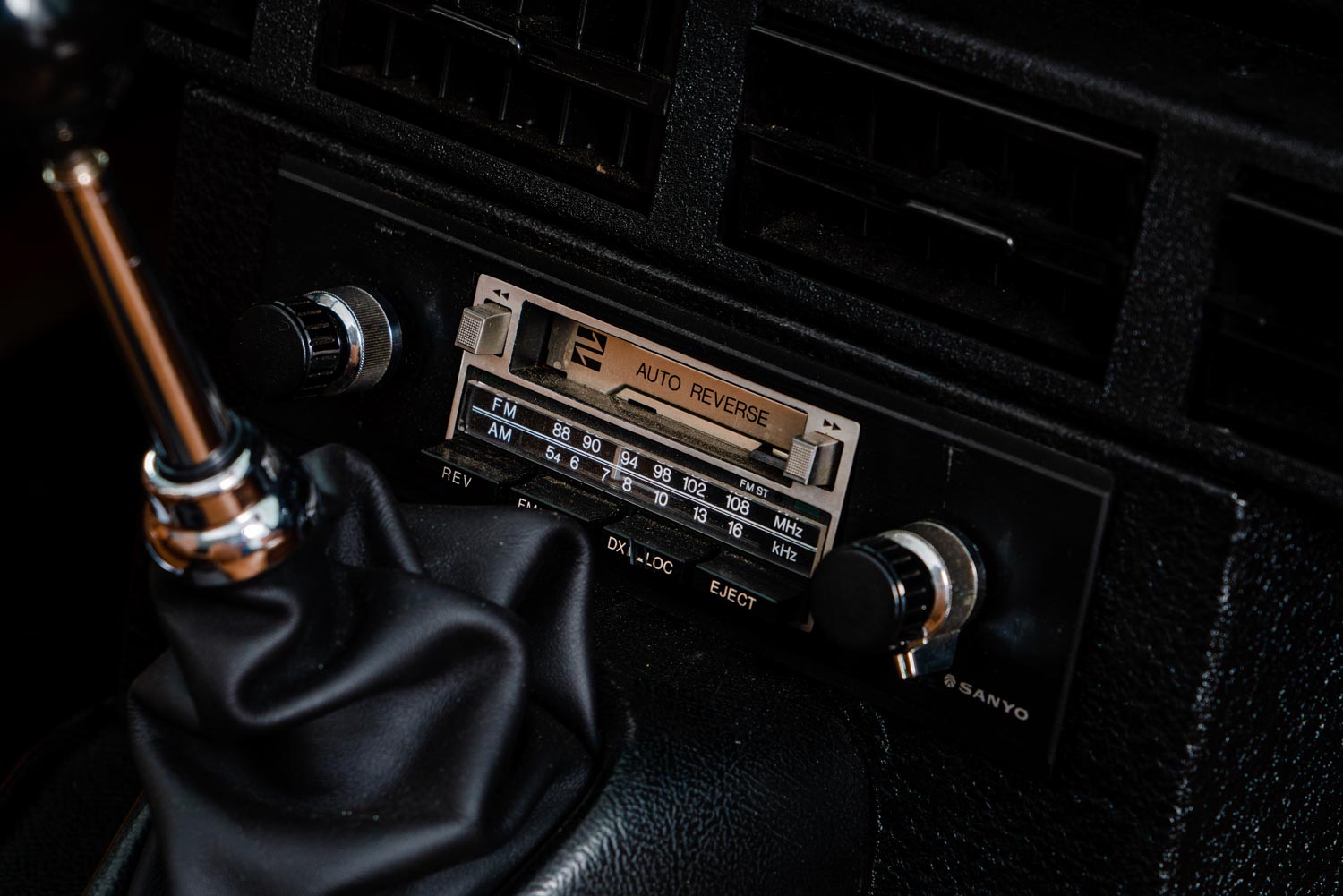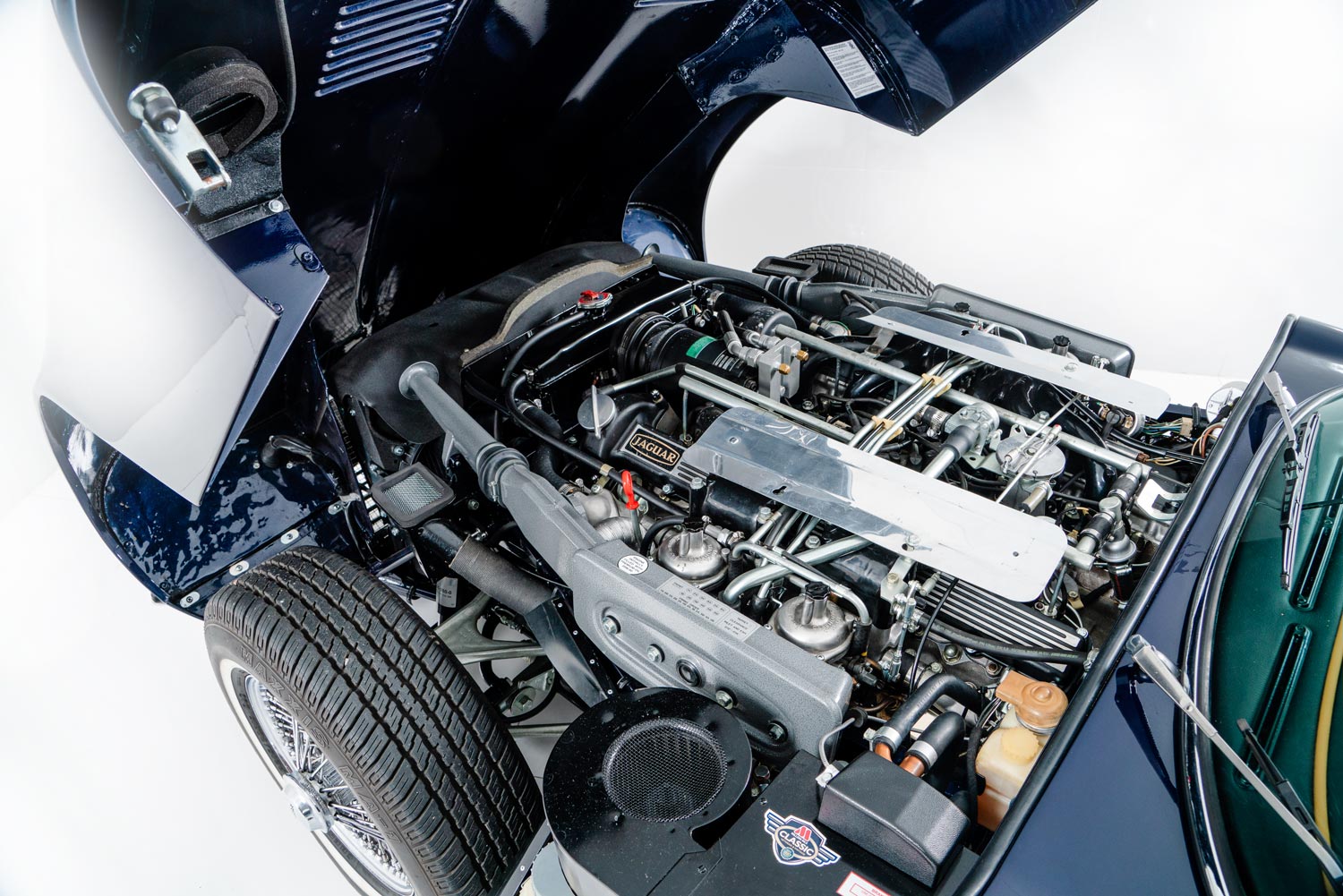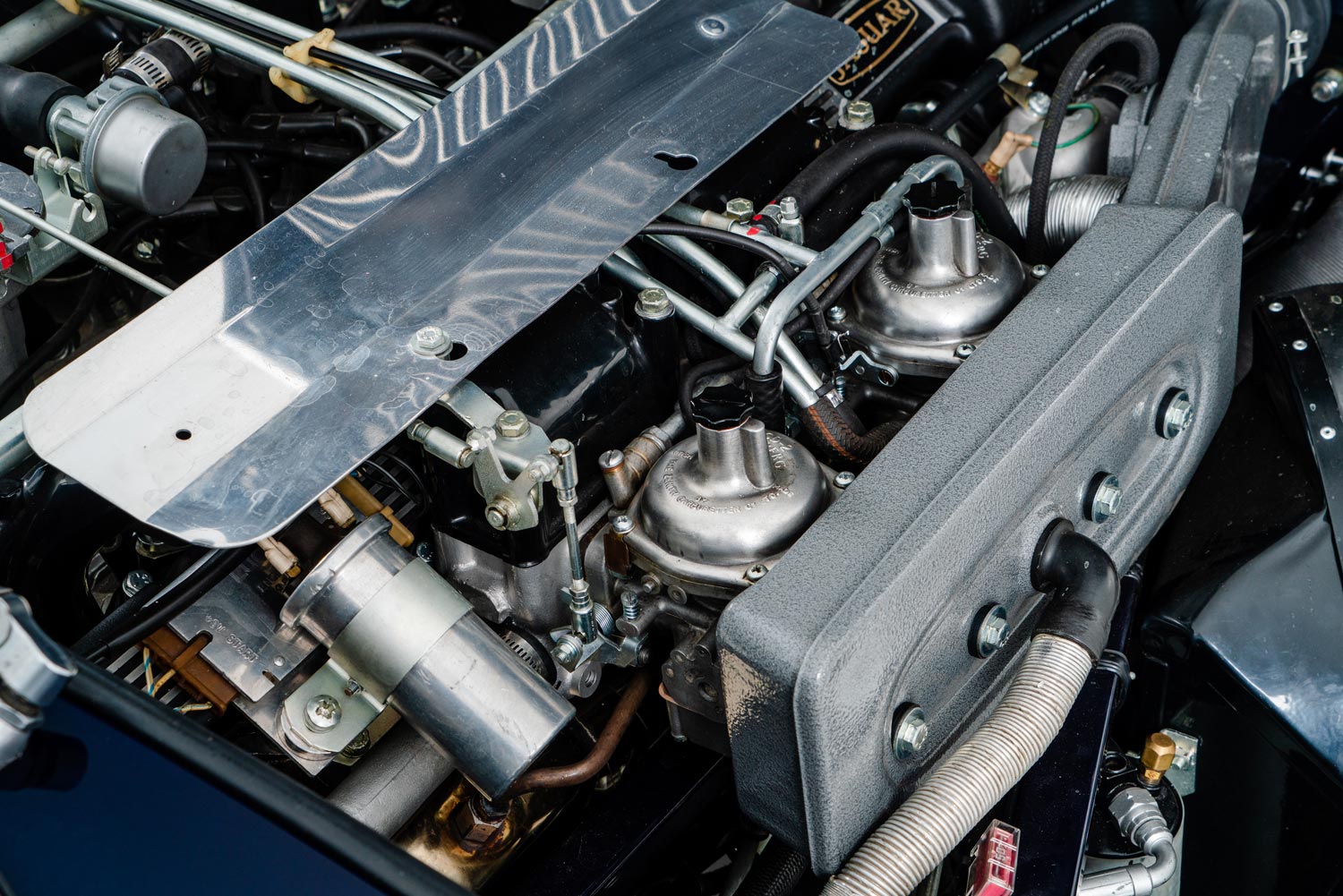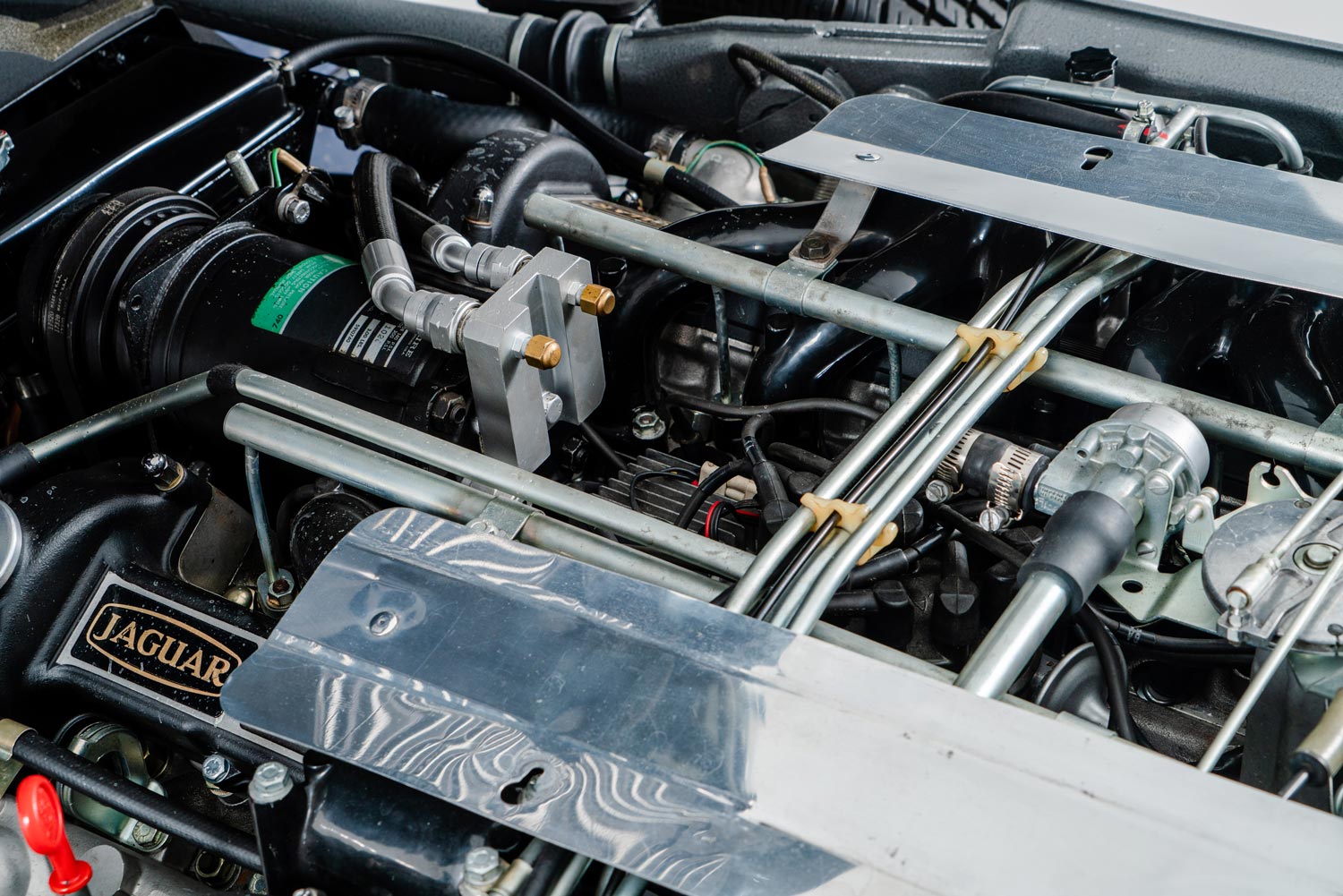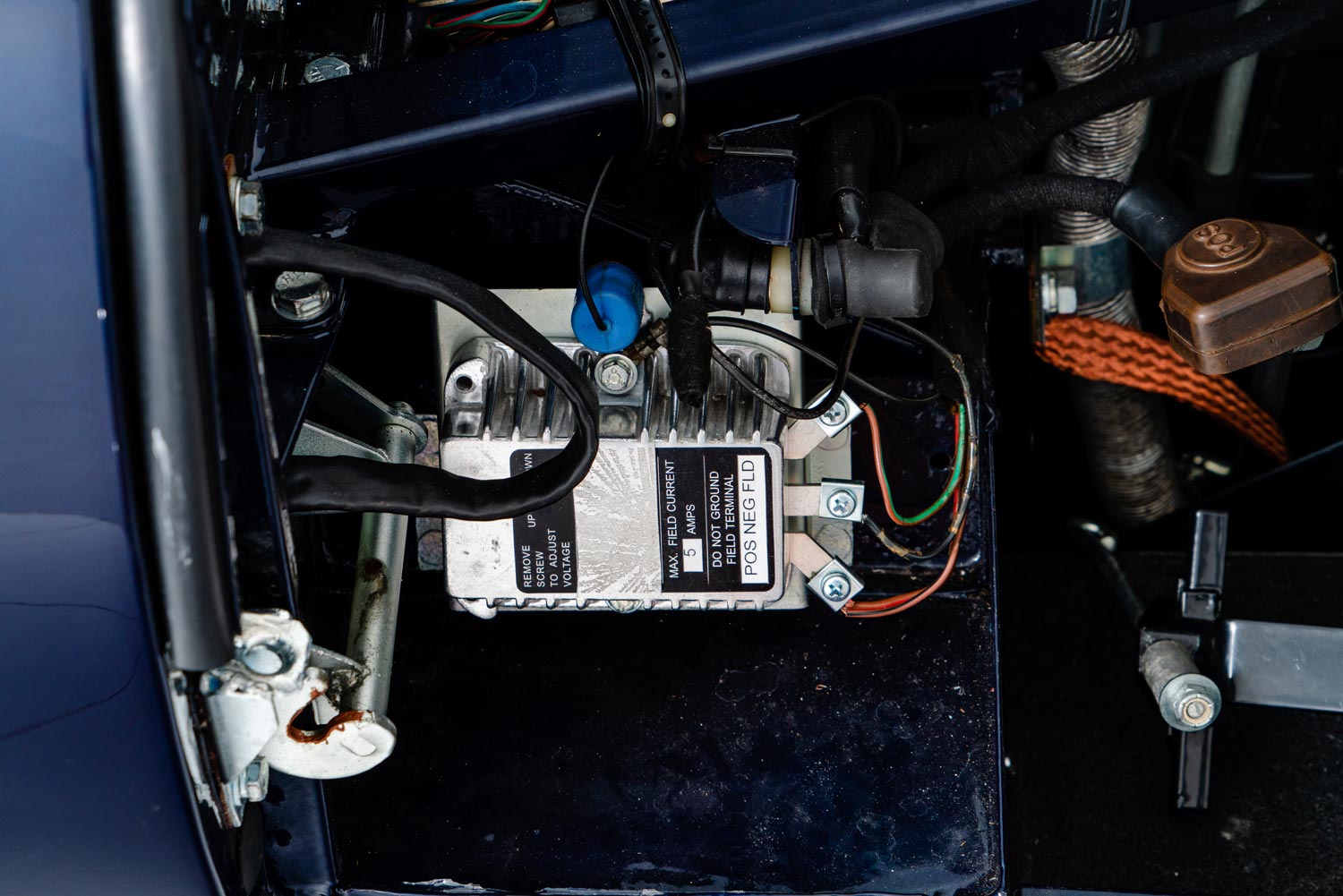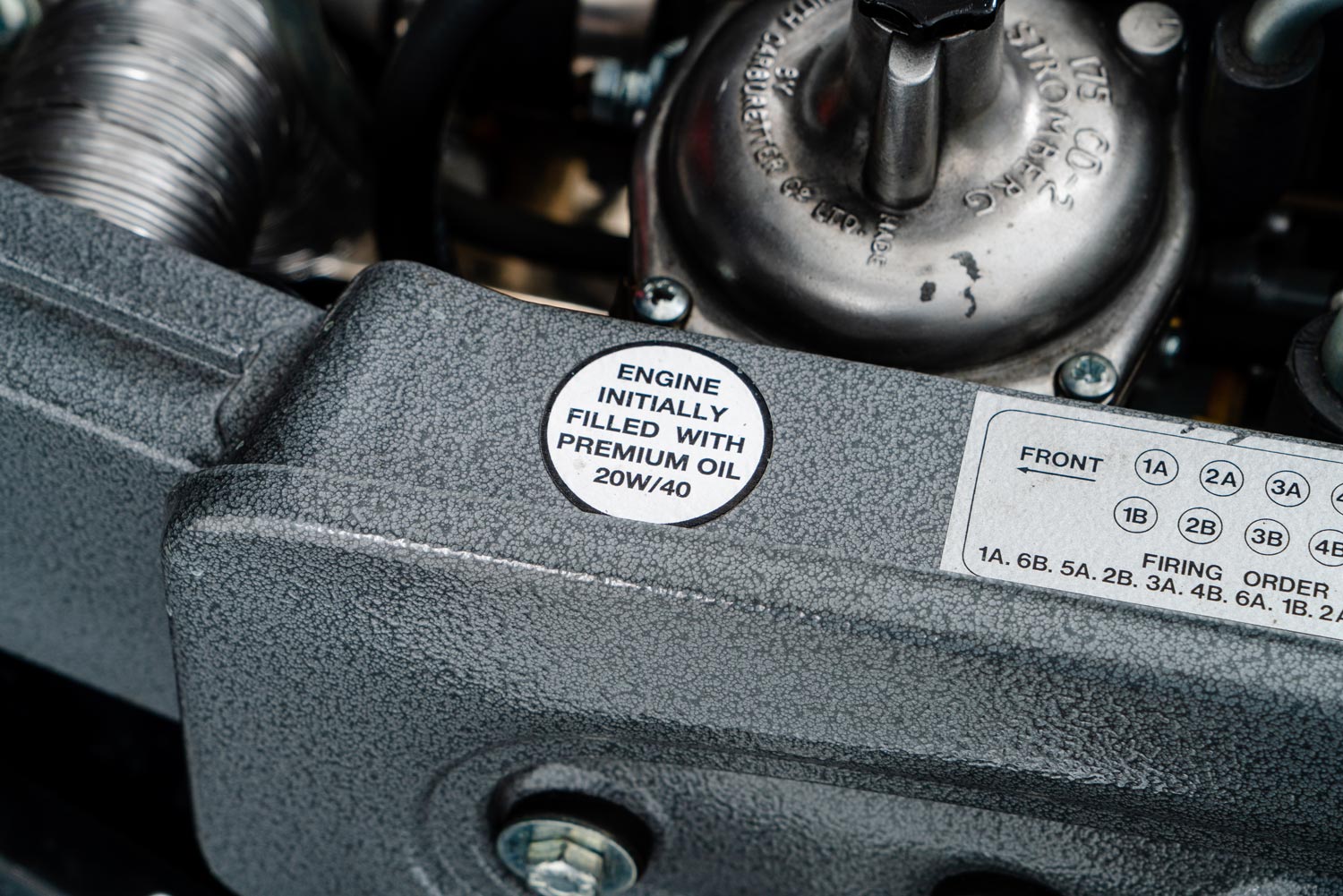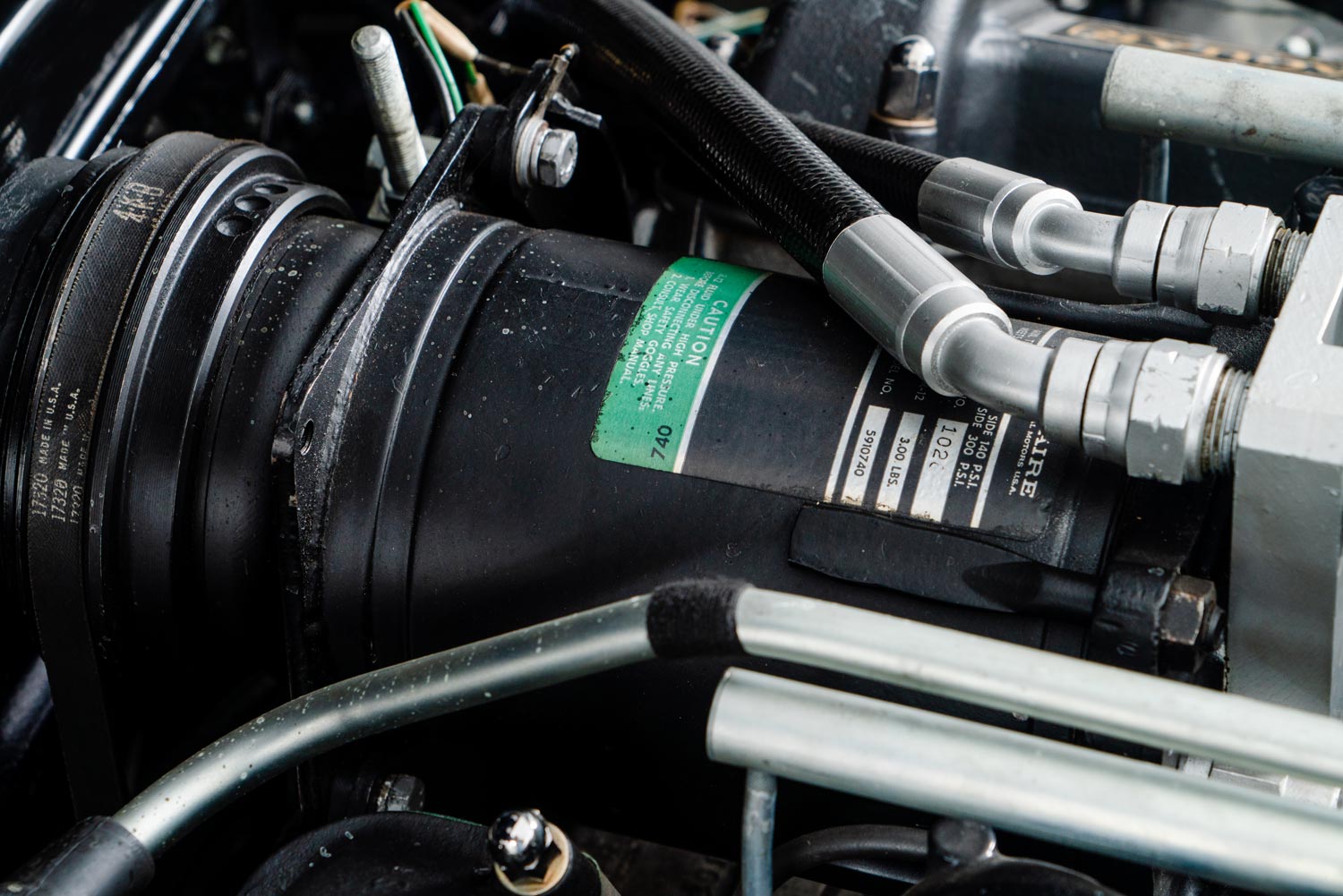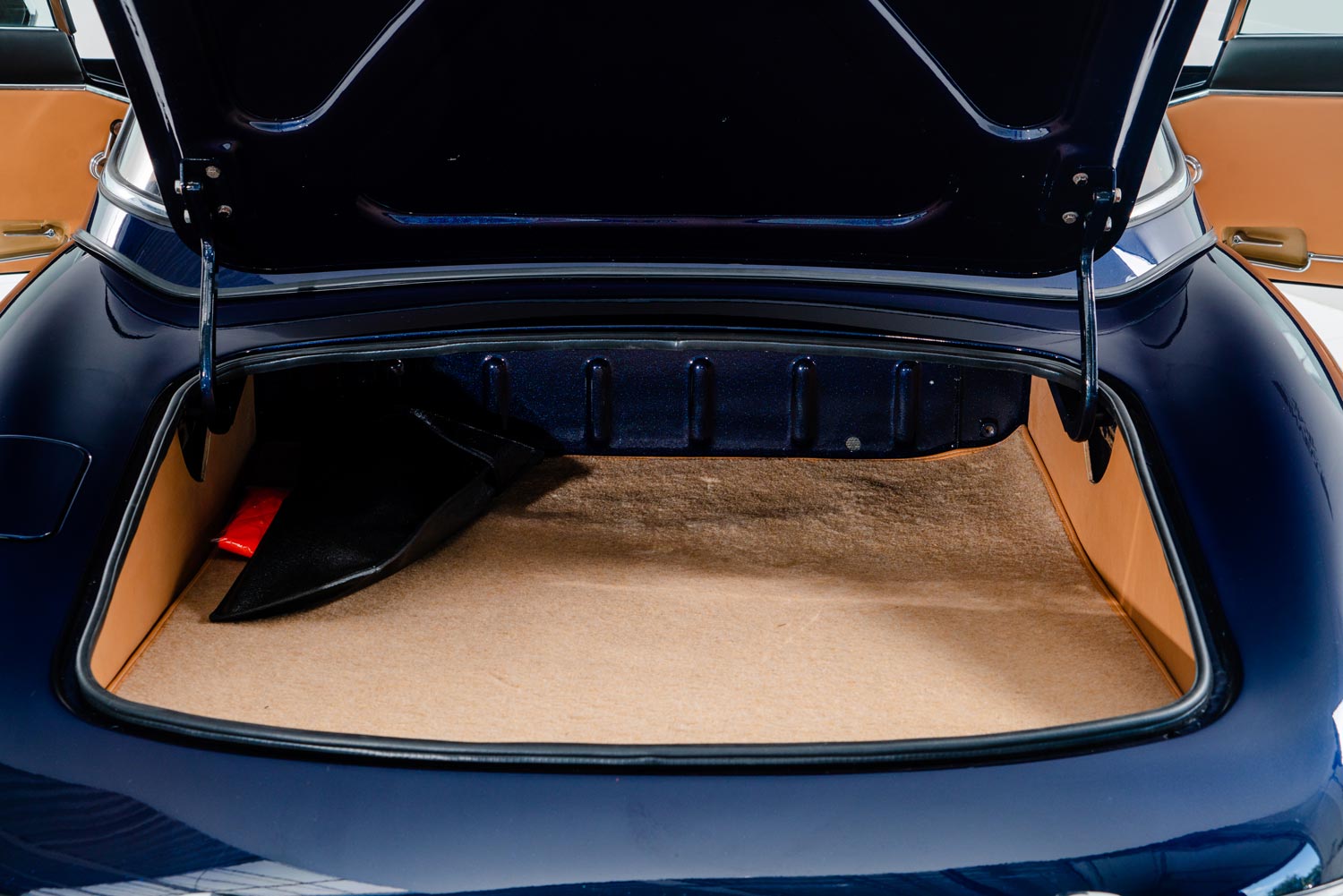MODEL HISTORY
The Jaguar E-Type is one of the most classic cars of all time. Its production took place in Coventry in 1961-1975 and a total of 72,515 units of all body types were produced, which included an FHC coupe with a short wheelbase, an OTS convertible and a 2+2 coupe with an extended wheelbase.
The car entered the market in March 1961 and was originally intended only for export markets - the domestic market did not get one until 4 months later. It attracted a lot of attention from the very beginning - thanks to the connection to the D-Type racecar, it came up with a large number of unprecedented technical solutions as well as performance parameters - e.g. the independent suspension of both axles, disc brakes on all wheels with power steering (taken from the predecessor XK150, but modified), steering with a rack, acceleration from 0-100 km/h under 7 seconds, maximum speed over 240 km/h, all this at more acceptable pricing policy, compared to the competition. So, naturally, it was a success. The design of the car was also a very strong argument - the great Enzo Ferrari himself, the founder of the car manufacturer of the same name, said about the E-Type, that it is the most beautiful car of all time.
From Jaguar's point of view, it can be said, that the car was produced in three series, although some cars produced at the turn of the production are referred to, by fans, as another "half series" or "quarter series". Series I was produced from 1961 to 1968. The first cars were equipped with a six-cylinder 3.8L from the XK150S. For these vehicles, the hood locks were located outside the car and their floor was level. These cars are also the most valued by collectors. After some time, the locks were moved inside the car and the floor was more significantly shaped to provide more legroom. From October 1964, the engine was replaced - the 3.8L gave way to the new 4.2L. Although it had the same power and maximum speed (265 hp and 241km/h), it provided a higher torque by 60Nm (384Nm). Thanks to the increase in torque, the car became more user-friendly and did not force the driver to shift so much. At the same time, the engine block was retained from the original 3.8L, only the bore was increased and the crankshaft was fitted with new bearings, the three SU carburetors have been preserved. In addition to the modified engine, the car replaced the dynamo with an alternator and an electric cooling fan. The transmission was also new - it received synchronization of the first gear. The back of the car, with the new engine, was now marked 4.2. For the OTS variant, the option of a hardtop was added and chrome wire wheels were also new for the model line.
The vast majority of cars in the series I were equipped with glass headlight covers, only a handful of cars in 1967 did not have them (and therefore is referred to them as series 1.25), another characteristic was a small "mouth" in the front for cooling, with turn signals and taillights located on the fenders of the car and the exhaust under the rear number plate. In 1966, the body type options was expanded by a coupe with an extended wheelbase called 2+2 with the option of ordering an automatic transmission. From 1967 until the end of series I, cars of the 1968 model year began to emerge, which are then referred to, by fans, as the series 1.5. These cars featured front headlights without a glass cover, but with a different design than the series 1.25. Furthermore, thanks to American regulations, plastic internal switches were used for the entire model line, and for American models, thanks to their emission standards, two Zenith carburetors began to be used instead of the original three SUs, which resulted in a decreased performance. The series 1.5 cars received a second cooling fan and adjustable seat backs, and the wing nuts on the wheels were replaced with hexagonal nuts. Series I was eventually created in 38,500 copies.
In 1968, the series II has been put into production, which is the least appreciated by collectors today. The elegant design of the first series was significantly affected by the necessary interventions in connection with the legislative requirements for the car in the USA. The glass headlight covers on the car disappeared forever, the rear bumper was greatly enlarged, reaching the rear fender, the entrance to the front radiator wall was also enlarged and the car was permanently equipped with two carburetors instead of three, which reduced power and torque by 20 units (hp / Nm). The series I start button has been replaced by an ignition key. The steering column had a new locking function known from today's cars and was also modified with a deformation part in case of a car crash. The front seats of the car have been redesigned due to the need to use head restraints. The front turn signals and rear lights traveled under the car's bumpers and it was now possible to order power steering and air conditioning. In total, less than 19,000 series II units were produced by 1971.
Series III was the final one. Jaguar virtually abandoned its six-cylinder and equipped the E-Type with a 5.3L V12 engine, which was based on a racing unit developed for the 24 Hours of Le Mans. The existing V6 variant was also offered, which, however, soon fell out of supply due to the low demand. The new V12 engine was fitted with four Zenith carburetors and produced over 270 hp. The modifications, of course, affected the entire car, including the brakes. Power steering became standard, the list of additional elements also included air conditioning, automatic transmission or chrome wire wheels. On the contrary, the original FHC coupe with a short wheelbase was dropped as a body type option, so only the OTS and 2+2 variants remained to be selected. Series III was easily recognizable by the split front grille, four exhaust tailpipes, other fender trims and also by the V12 badge on the back. The design of the American version changed, again, because of the regulations - the bumpers had to withstand a 5 mph crash, but this time, fortunately, the modifications had no effect on the implementation of the European version. A total of just over 15,000 E-Types of the series III saw the light of day, and, in 1975, the production of the model was terminated.
Probably the most expensive model of the Jaguar E-Type was the one called Lightweight. A total of 12 vehicles of this specification and 2 spare bodies were produced between 1963-1964. As the name suggests, it was a lightweight variant of the E-Type primarily intended for racing. The original 3.8L V6 was cast from aluminum and fitted with three Webers carbeurators giving 300 hp. The first cars had a standard four-speed transmission with a shorter final gear, but this was later replaced by a five-speed transmission from ZF. The original plan was to build 18 units and, in 2014, Jaguar decided to finish the last 6 Lightweights according to period procedures.
OUR CAR
Our car is a series III OTS model. It is equipped with a V12 unit and was factory coupled with a four-speed manual transmission. The year of production is 1973 and the car was originally intended for the American market, so it should technically bear the designation XKE.
We bought the car in a complete, but slightly woeful, pre-renovation condition. The car was completely disassembled in our Rallied & Raced facility and was, with the help of the period documentation and the original parts, completely restored. This affected not only the body, paint and upholstery, but also the engine. The original four-speed manual transmission already adorns the racks of our warehouse, and a five-speed Tremec transmission took its place.
The car is fully functional and giving its owner maximum pleasure.



